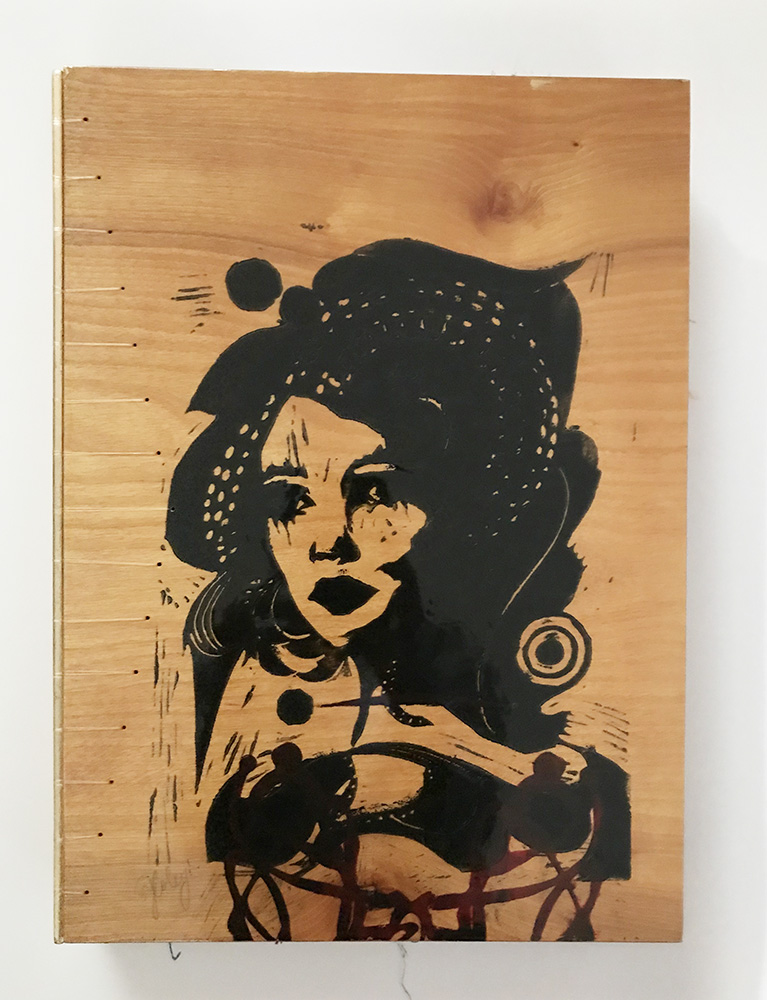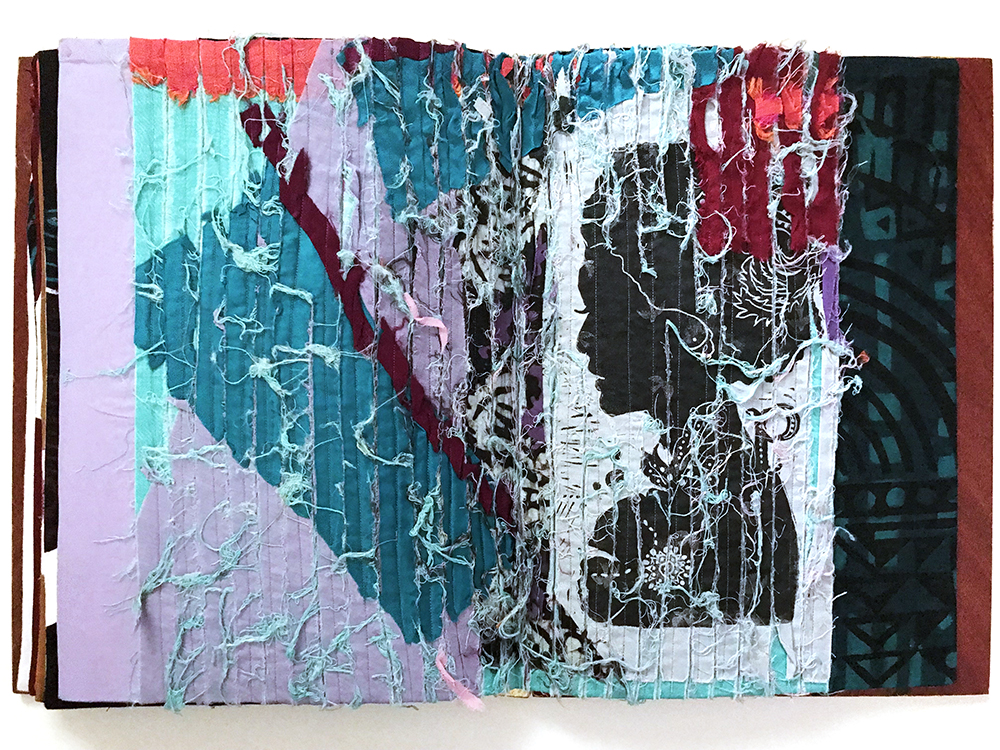Work samples
-
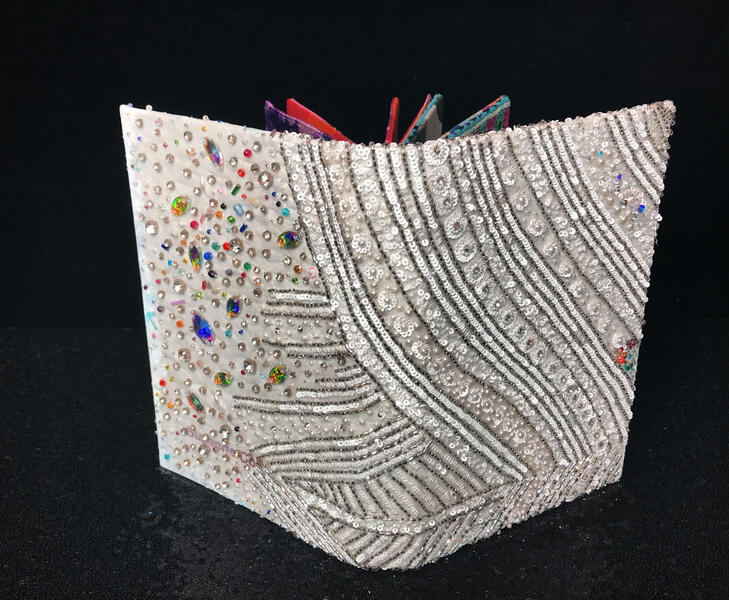 Gracious Light
Gracious LightGracious Light (2020) is one of more than 500 handmade, unique books Suzanne Coley has created over the past decade. Coley is credited with pioneering the form of "couture textile books," a practice that fuses meticulous design with bold experimentation by bringing couture sewing techniques into bookmaking. Her work often incorporates rare fabrics, embroidery, and layered textile constructions.
Like all of her books, Gracious Light is a finely crafted volume that draws on traditional embroidery, quilting, and needlework techniques from her African American community as well as Asian and Continental traditions she has studied. Its cover features more than 6,500 hand-sewn beads and rhinestones applied to a hand painted vintage wedding dress. Each page is composed of rare and vintage fabrics, and the imagery throughout is inspired by Shakespeare's Sonnet 7.
The book belongs to Coley's ongoing series Love Sonnets from Shakespeare to Baltimore (begun in 2018), in which she translates Shakespeae's language into textile based art using both contemporary and historical needlework techniques. Her use of recycled wedding dresses for covers and pages evoke the emotional landscape of the sonnets. These and other historic textiles are cut, dyed, painted, embroidered, and collaged. Such transformations call attention to their beauty, economic, social, and cultural histories.
Coley is a 2023-25 Folger Institute Fellow specializing in Shakespeare and embroidered bindings. Gracious Light was featured in the Folger Shakespeare Library's Out of the Vault exhibition from 15 September 2024 to 9 February 2025.
-
 The 20-Count Verse: In Sequent Toil
The 20-Count Verse: In Sequent Toil“This one-of-a-kind book is a response to Sonnet 60, Shakespeare’s meditation on Time as a relentless force. I wanted to create imagery that reflects the fragile balance between life’s fleeting moments and enduring beauty.
“The patterned geometry of an Oriental rug became the visual motif. By translating its intricate design on the book’s cover, I transformed a textile usually left underfoot into an object of contemplation, echoing the sonnet itself. Stitched on a 20-count Penelope canvas using the continental stitch, each deliberate motion became a parallel to Shakespeare’s craft: beauty shaped through patient accumulation. Each stitch a line of verse, each row a wave of time.
“In Shakespeare’s sonnets, each line is perfected through inherited structures of meter, rhyme, and metaphor. In embroidered bindings, each stitch and pattern reflects generations of knowledge and care. Repetition in both is generative, creating resonance and subtle variation within a strict framework. Time, the figure whose ‘scythe mows down all,’ threatens both woven fabric and written verse, yet neither yields easily to erasure. Their patterns and structures become forms of resistance, holding their shapes even as the world shifts. In this quiet defiance, labor and formalized structure transform into enduring beauty that time may touch but cannot wholly undo.
“The 20-Count Verse: In Sequent Toil is my hand-made meditation on persistence, pattern, and the enduring dialogue between art and Time.”
Suzanne Coley
The 20-Count Verse: In Sequent Toil, 2024, H: 9", W: 15" open, D:2", 18 pages
-
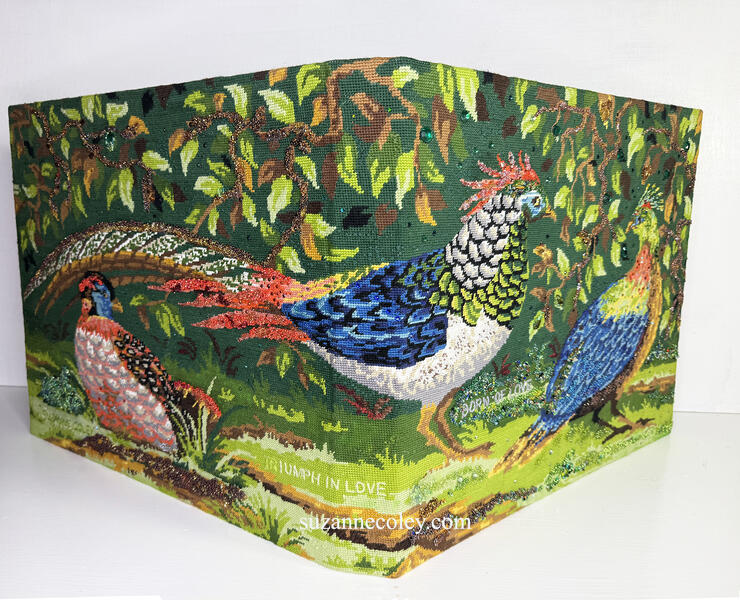 Born of Love, Sonnet 151
Born of Love, Sonnet 151Born of Love (2024) is a one-of-a-kind textile book inspired by Shakespeare's Sonnet 151. Spanning nearly four feet, the book translates the poem's emotional shifts into color, texture, and movement. Its cover features three vibrantly embroidered African Peafowls on vintage French double-mesh canvas. As a threatened species, the Peafowls underscore the vulnerability at the heart of the sonnet.
Coley combines durable 16-century continental stitching, historically used for vestments and upholstery, with a "double-embroidered" technique adapted from African American sharecropper quilting. Together, these layered methods strengthen the textiles while enriching their visual depth.
Suzanne Coley is a 2023-25 Folger Institute Fellow. Born of Love was featured in Out of the Vault exhibition at the Folger Shakespeare Library from 15 September 2024 - 9 February 2025.
-
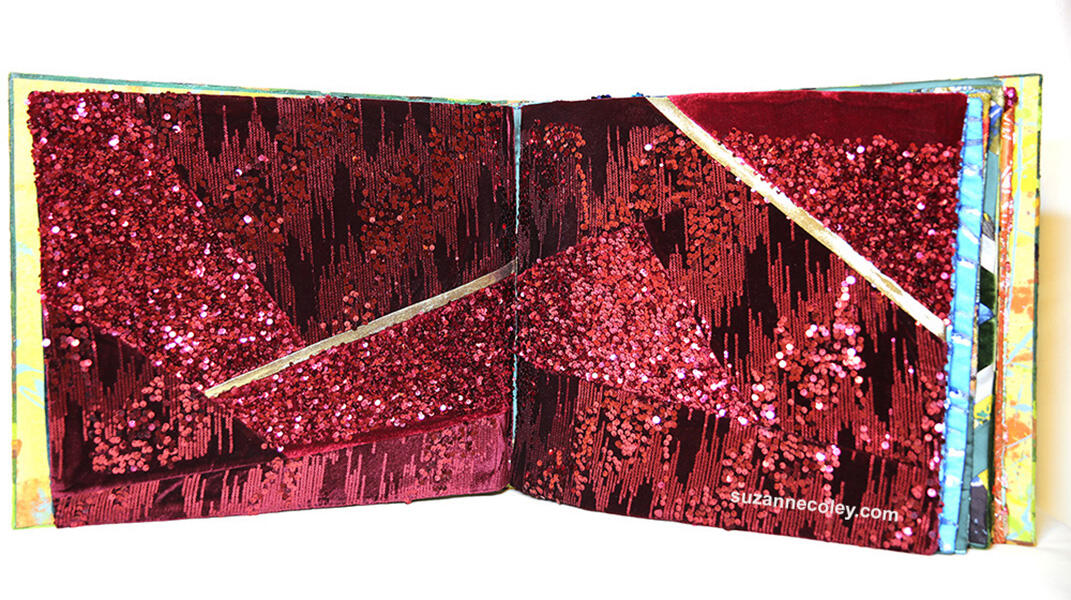 Born of Love, Velvet Pages
Born of Love, Velvet PagesBorn of Love (2024) is one of 500 unique handmade books Suzanne Coley has created over the past decade. Blending literature and fashion, it offers both a multisensory response to Shakespeare and a contemporary social commentary. Inspired by Sonnet 151, Coley sourced velvet fabrics and sequins for France and the United States to construct the books' richly textured pages.
Coley interprets Shakespeare's language through a wide range of historical and contemporary textiles and needlework technique. These velvet pages respond specifically to line 6, "My nobler part to my gross body's treason." Fabric associated with wealth and nobility, such as velvets, sequins, and damask were transformed into page materials that shift from a single voice to many, inviting layered readings for diverse audiences.
Coley is a 2023-25 Folger Institute Fellow specializing in Shakespeare and embroidered bindings. Born of Love was featured in the Out of Vault exhibit at the Folger Shakespeare Library, Washington, DC from 15 Sept 2024 - 9 Feb 2025.
About Suzanne
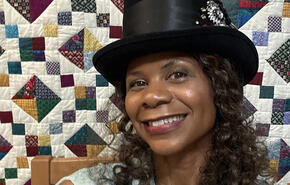
Suzanne Coley is a 2023-2025 Folger Institute Fellow and a 2023-2024 Arizona Center for Medieval and Renaissance Studies Fellow. Her main artistic fields are printmaking, poetry, embroidery, and book arts. Suzanne Coley is the artist credited with pioneering the style of "couture textile books," which combines precise design with bold experimentation by incorporating couture sewing techniques into bookmaking, often using unique fabrics and embroidery to create layered, artistic volumes.… more
Love Sonnets from Shakespeare to Baltimore 2018 - 2025 (selected books from ongoing series)
Coley’s art often explores how trauma can materialize in cultural memory; it shines a light on overlooked or forgotten stories. Her stories are reflections of the physical, moral, and psychological struggles, encounters, and battles that are part of the human experience. Through the COVID-19 pandemic, Coley continued to create important, thought-provoking art. In addition to designing posters for the 2020–21 season of the Baltimore Center Stage theater, the artist also began a new project, “Love Sonnets, from Shakespeare to Baltimore,” inspired by conversations with Baltimore Public School middle school students. Shakespeare is not taught at many inner-city schools because of prejudicial sentiments that assume the students are not ready for it.
Love Sonnets from Shakespeare to Baltimore was supported by a grant from the Robert W. Deutsch Foundation in 2020. This ongoing project uses Shakespeare’s sonnets to create a dialogue between the past and the present. Coley juxtaposes a non-elitist approach to Shakespeare’s language with patchwork quilts and fragments from wedding dresses to create books that give a renewed vitality to the pedagogical approach to the Bard’s works. Coley hopes that the books will serve as both calls to action and symbols of hope for a more equitable world, in which barriers constructed as a result of systemic racism no longer exist.
-
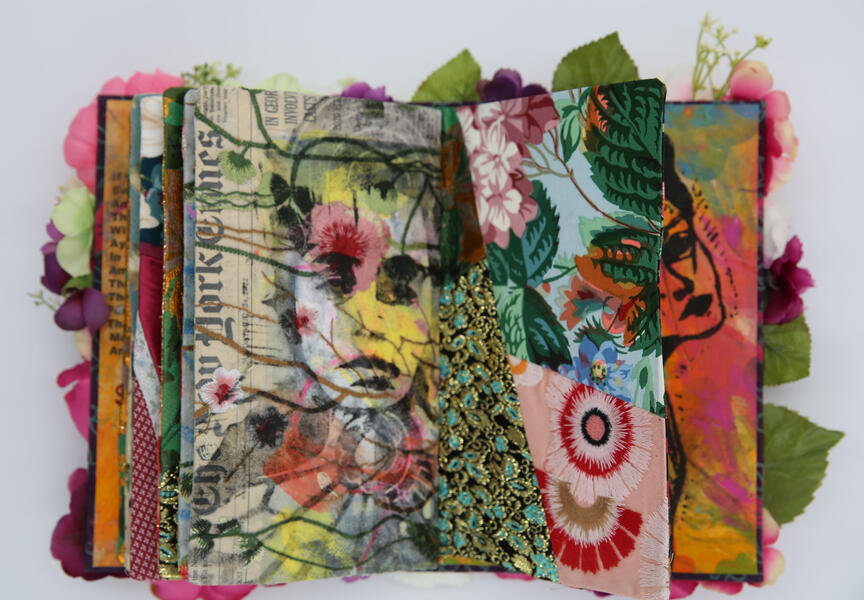 In Things of Great Receipt
In Things of Great ReceiptIf thy soul check thee that I come so near
Swear to thy blind soul that I was thy Will
The book opens with very graphic designs that combine traditional quilting principles with modern fabric manipulation techniques. Fabrics are up-cycled from 1960s brocade and damask evening dresses. They are combined with modern embroideries and hand manipulated techniques normally used for couture dressmaking. By combining book making techniques with couture dressmaking techniques, the final pages have a precise, purposeful appearance. -
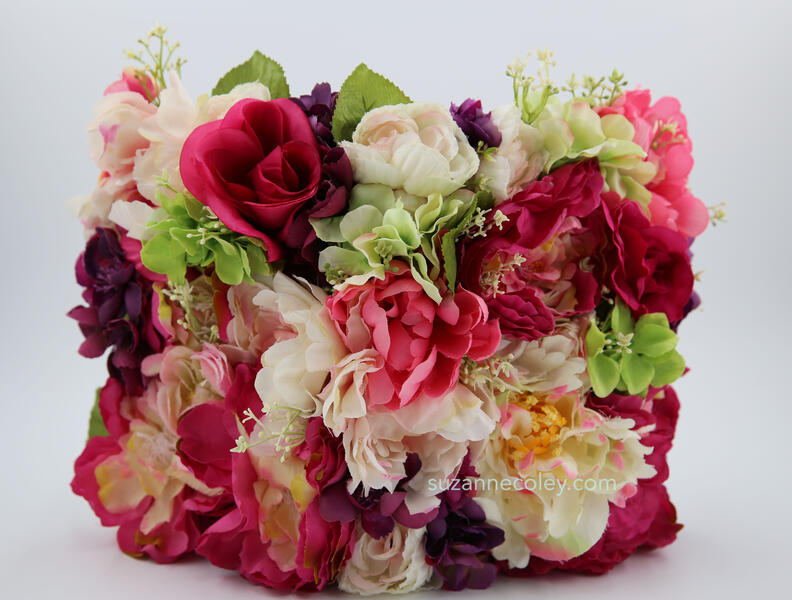 Soul Check 136 by Suzanne Coley
Soul Check 136 by Suzanne ColeyInspired by Shakespeare's Sonnet 136, the bright floral cover of this book invites the reader to open it and read the contents. Cover was created with traditional heavy weight binders boards, painted cotton fabrics, and over 60 custom made polyester, plastic, and vinyl florals.
-
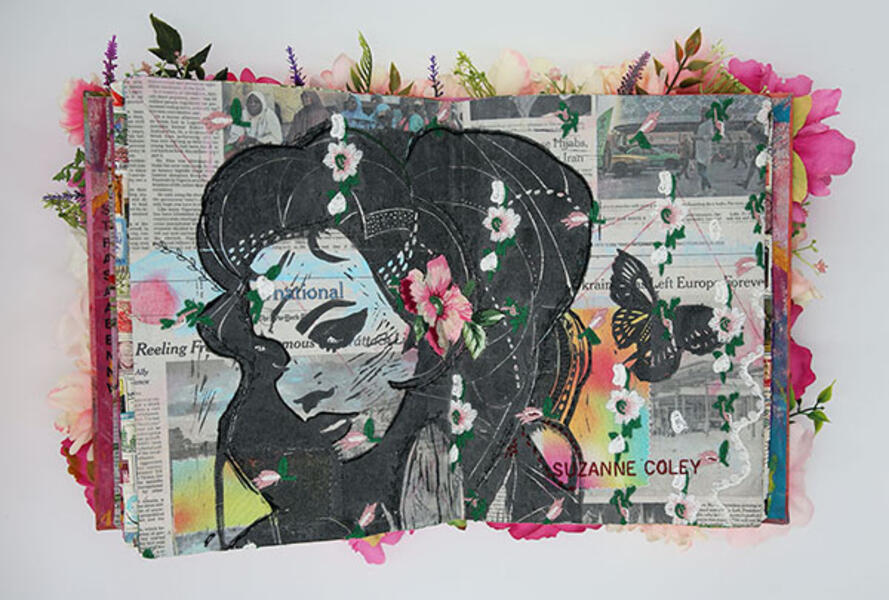 In Bloom, center page
In Bloom, center pageHand carved linocut printed on newspaper and cotton with embroidery. This is a center page from the handmade textile book In Bloom. This page is in response to the following lines 2-4 in Shakespeare's Sonnet 18:
Thou art more lovely and more temperate.
Rough winds do shake the darling buds of May,
And summer’s lease hath all too short a date.
-
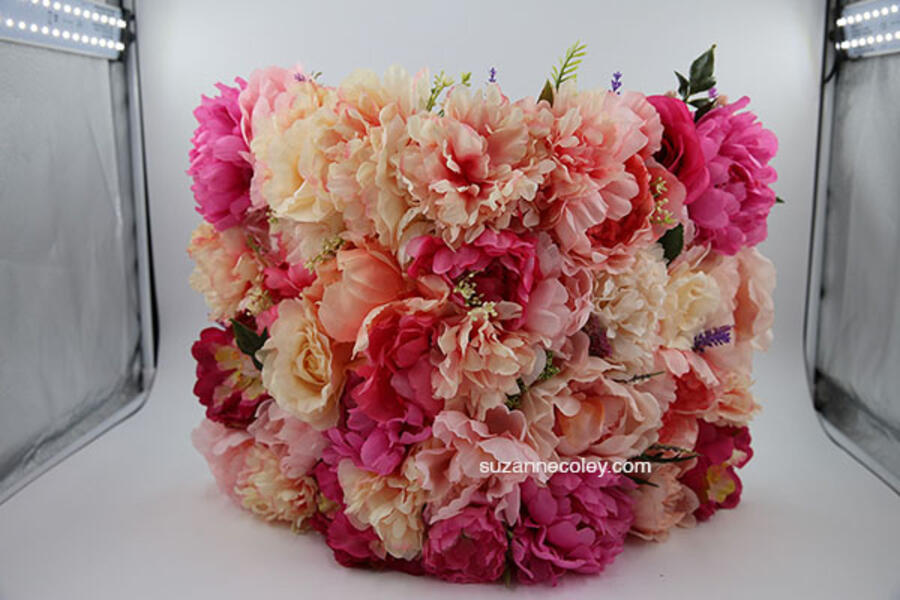 In Bloom
In BloomHandmade book inspired by Shakespeare's sonnet 18, Shall I compare thee to a summer's day. The pink floral cover, made entirely from textiles, reminds us of the beauty of Spring and rebirth. Creating flowers from fabric, although beautiful and meticulously crafted, reminds us of the brief life of real blooms and life. Like the seasons, nothing lasts forever.
-
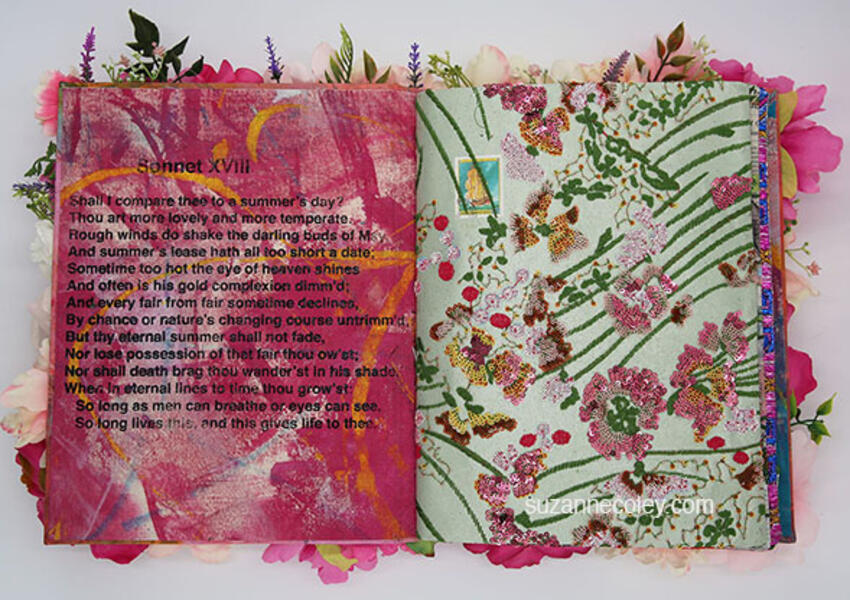 In Bloom, page from textile book
In Bloom, page from textile bookHand painted wedding dress with silkscreen. Hand painted cotton page appliquéd with embroidery and postage stamps. This page is in response to Shakespeare's Sonnet 18, lines 8 and 9:
By chance, or nature’s changing course, untrimmed;
But thy eternal summer shall not fade, -
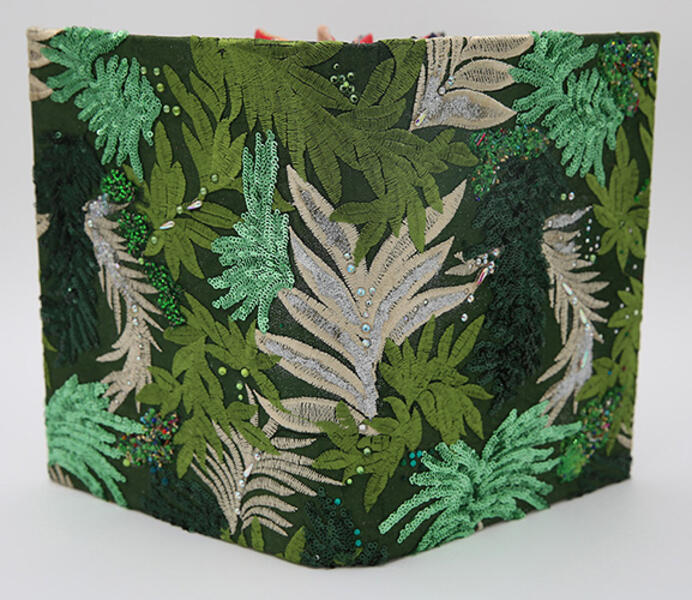 Love's Not Time's Fool, Tier 1 Cover
Love's Not Time's Fool, Tier 1 Cover"In 2025 I created three embroidered books in response to Shakespeare's Sonnet 116, compelled by the poem's layered intricacies and understand complexities. This volume constitutes the first installment of the series. While Sonnet 116 is frequently read as a clear and declarative assertion, the process of translating its language into visual and material form revealed a text of far greater interpretive density.
"Through illustration, stitching, and constructing the books, I encountered multiple strata of meaning. These strata are the subtleties, hesitations, and semantic shifts that often recede in conventional readings. However, they have a profound significance of how visual meaning is constructed.
"Working across three discreet volumes enabled me to trace these nuances both materially and visually. This allowed me to illuminate dimensions of the sonnet that are easily obscured by more straightforward interpretations. For more details about this series of books and images please visit my website: suzannecoley.com."
Suzanne Coley
-
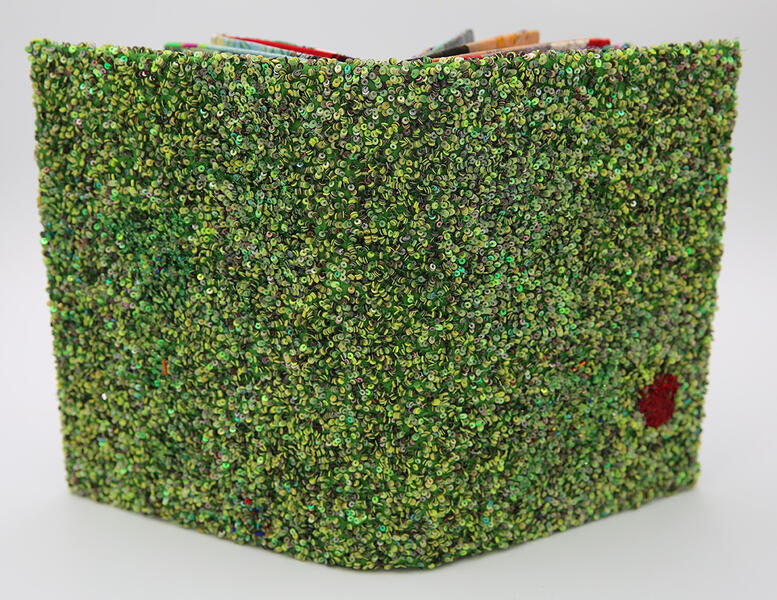 Love's Not Time's Fool, Tier 2 Cover
Love's Not Time's Fool, Tier 2 Cover"In 2025 I created three embroidered books in response to Shakespeare's Sonnet 116, compelled by the poem's layered intricacies and understand complexities. This volume constitutes the second installment of the series. While Sonnet 116 is frequently read as a clear and declarative assertion, the process of translating its language into visual and material form revealed a text of far greater interpretive density.
"Through illustration, stitching, and constructing the books, I encountered multiple strata of meaning. These strata are the subtleties, hesitations, and semantic shifts that often recede in conventional readings. However, they have a profound significance of how visual meaning is constructed.
"Working across three discreet volumes enabled me to trace these nuances both materially and visually. This allowed me to illuminate dimensions of the sonnet that are easily obscured by more straightforward interpretations. For more details this series and images please visit my website: suzannecoley.com."
Suzanne Coley
-
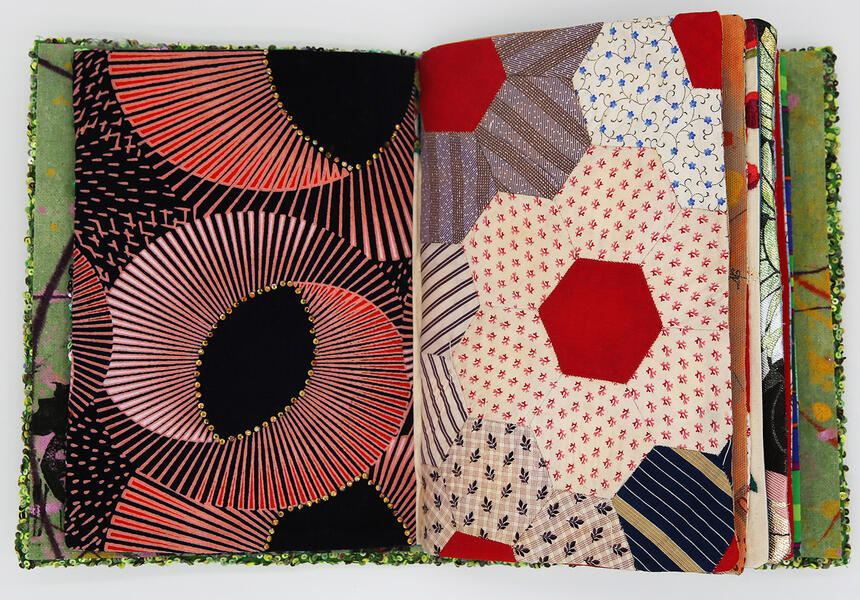 Love's Not Time's Fool, Page spread
Love's Not Time's Fool, Page spreadPages from Love's Not Time's Fool, 2025
-
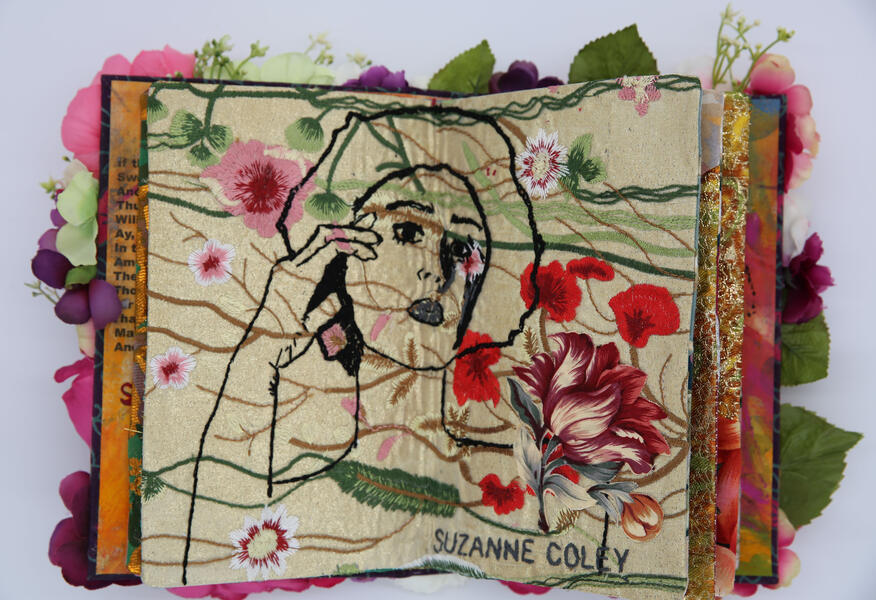 For Nothing Hold Me1960s gold lame fabric handed down to me from a nonagenarian African American seamstress, was hand embroidered. Other techniques used were broderie perse and appliqué.
For Nothing Hold Me1960s gold lame fabric handed down to me from a nonagenarian African American seamstress, was hand embroidered. Other techniques used were broderie perse and appliqué. -
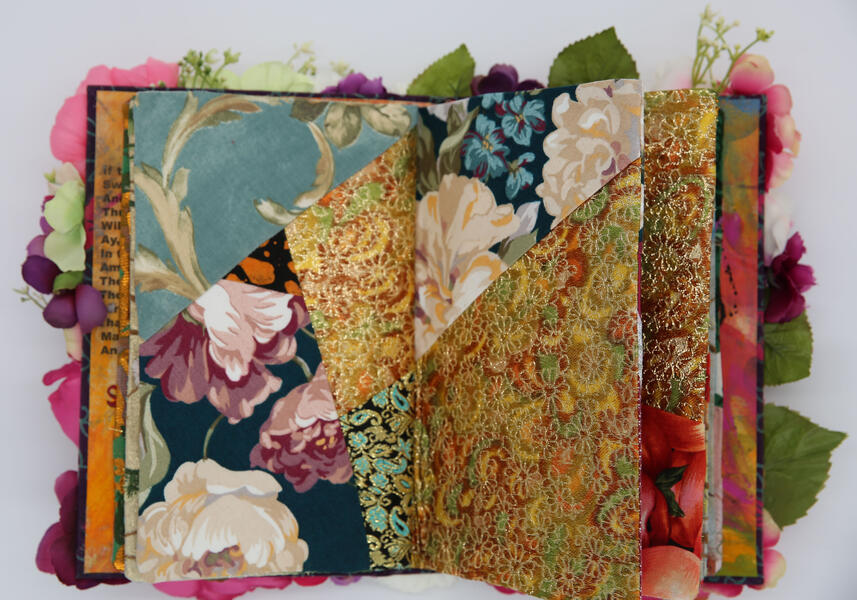 Among A Number One Is Reckoned None
Among A Number One Is Reckoned NoneVintage 1960s damask textiles are combined with muted floral textiles in a patchwork design inspired by "Sharecropper" quilting techniques by African American sewers from North Carolina. The larger damask textile, on the lower right hand page, was handed down to me by a nonagenarian African American seamstress in 2018.
Love Sonnets from Shakespeare to Baltimore, 2018 - 2023
"Love Sonnets from Shakespeare to Baltimore art series blends Shakespeare's 154 sonnets with recycled wedding dresses, historic quilts, and original printmaking to create contemporary couture art books. I am inspired by the sonnet's elegant 14-line structure. How its balance of logic and emotion, and by the cultural histories embedded in textiles.
"By transforming wedding dresses from the 1930s through the 1970s into book pages, I explore how fabric holds memory and meaning. The deconstructionist couture approach allows the textiles to speak through cutting, dyeing, painting, and collage, while remaining clean and intentional in their final form. Baltimore's quilting and needlework traditions deepen the work's community roots.
"Screen-printed sonnets, linocuts, and prints interact with these materials to create layered readings. Each page becomes a dialogue between literature and fashion, offering a multi-sensory and contemporary response to Shakespeare." Suzanne Coley
-
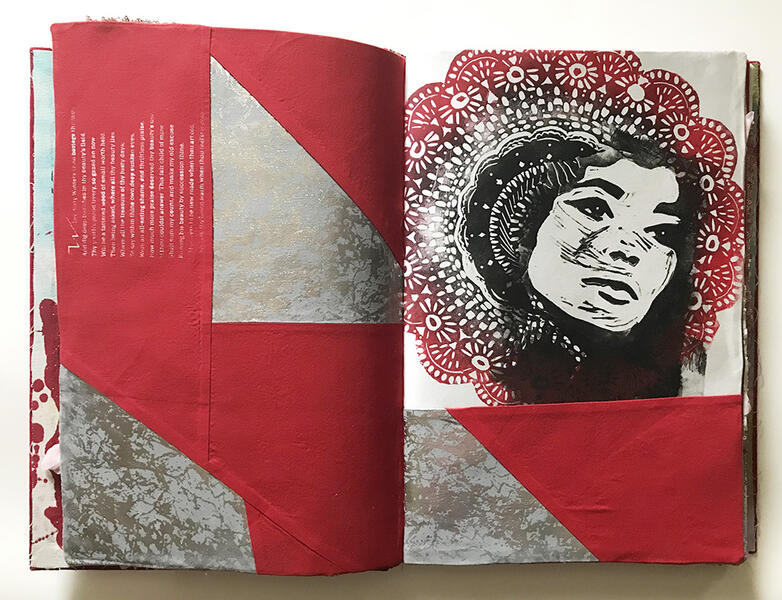 Sonnet II: Forty WintersWhen forty winters shall besiege thy brow. Textile pages made from repurposed wedding dresses. 16.5" x 24", 2019
Sonnet II: Forty WintersWhen forty winters shall besiege thy brow. Textile pages made from repurposed wedding dresses. 16.5" x 24", 2019 -
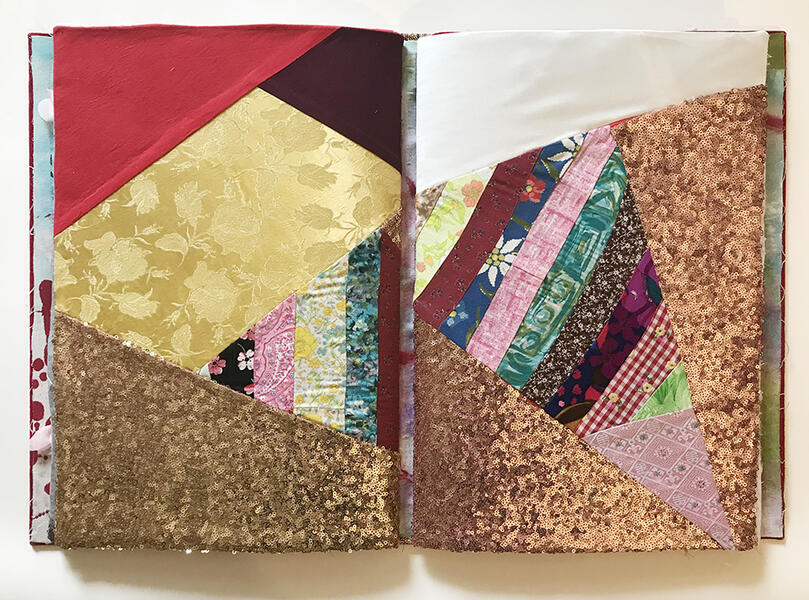 Dig deep trenches in thy beautyhandmade textile book using repurposed wedding dresses, 16..5" x 24", 2019
Dig deep trenches in thy beautyhandmade textile book using repurposed wedding dresses, 16..5" x 24", 2019 -
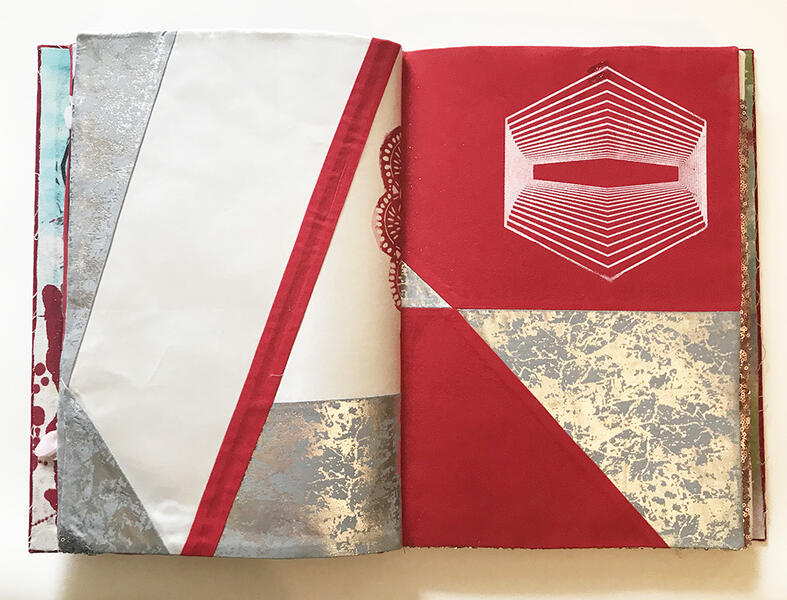 Thy youth's proud liveryTextile book using repurposed wedding dresses. Hand dyed, hand painted textiles, 16.5" x 24", 2019
Thy youth's proud liveryTextile book using repurposed wedding dresses. Hand dyed, hand painted textiles, 16.5" x 24", 2019 -
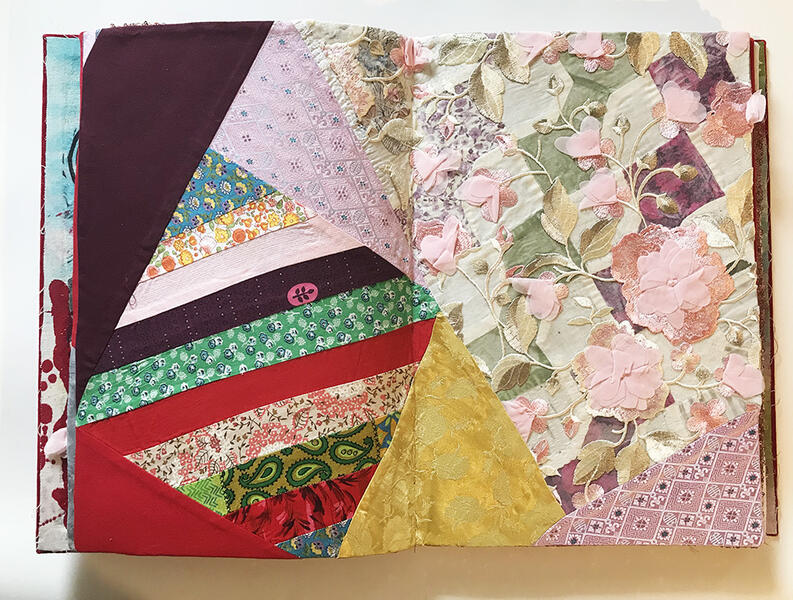 Sonnet II: So Gazed on Now . . .Deconstructed wedding gowns, handprinted, hand dyed, vintage quilt fragment. 16.5" x 24", 2019
Sonnet II: So Gazed on Now . . .Deconstructed wedding gowns, handprinted, hand dyed, vintage quilt fragment. 16.5" x 24", 2019 -
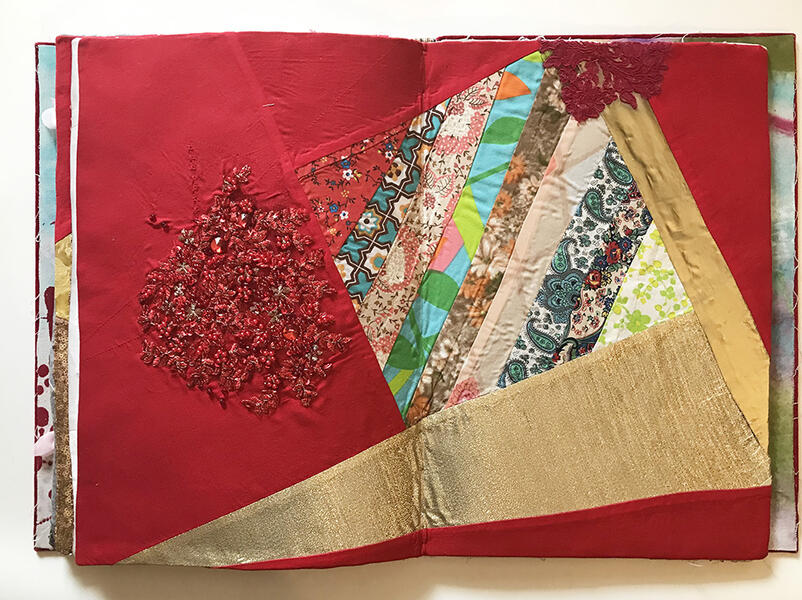 All thy Beauty LiesRepurposed wedding dress, hand dyed, hand painted, hand beading, embellishments, vintage quilt fragment. 16.5" x 24", 2019
All thy Beauty LiesRepurposed wedding dress, hand dyed, hand painted, hand beading, embellishments, vintage quilt fragment. 16.5" x 24", 2019 -
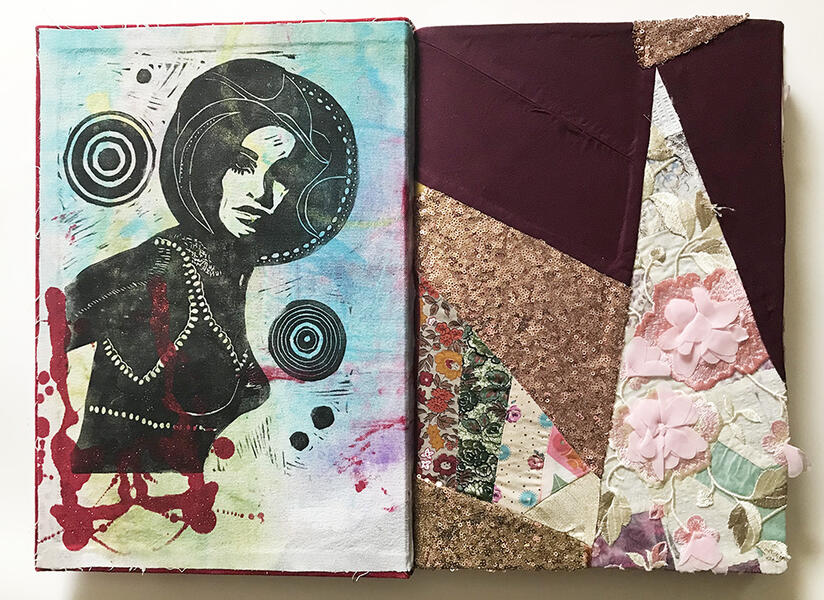 Treasure of thy daysRepurposed wedding gown, deconstructed vintage quilt fragment, printmaking, fabric painting, printmaking. 16.5" x 24", 2019
Treasure of thy daysRepurposed wedding gown, deconstructed vintage quilt fragment, printmaking, fabric painting, printmaking. 16.5" x 24", 2019 -
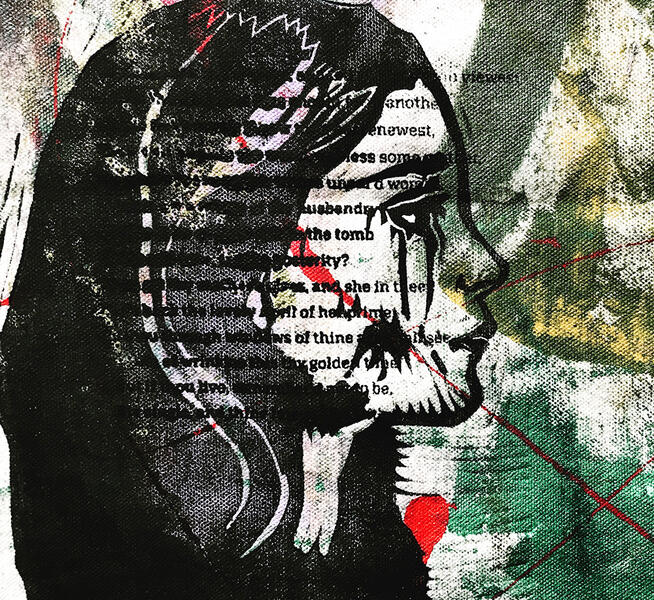 Sonnet III: Look In Thy GlassHand painted on repurposed wedding dress and Baltimore duck cotton fabric, 6.5" x 9", 2019
Sonnet III: Look In Thy GlassHand painted on repurposed wedding dress and Baltimore duck cotton fabric, 6.5" x 9", 2019
All I Have
All I Have is part of a larger year-long project that was inspired by African textiles I received from the National Museum of African Art Library. While working on this project there were multiple news reports about hundreds of migrants traveling in unsafe, overcrowded rickety boats in the Mediterranean Sea to Europe. A few strong winds, bad weather conditons or strong currents could easily capsize these boats, drowning everyone on board. One survivor of these "death voyages" described the ordeal as "it was our only hope."
One of the textiles I received was a woman's garment from Northern Africa. I imagined her story based on these news stories and "it was our only hope" and created All I Have.
All I Have
My seventh son is all I have.
We must go to land that doesn't
birth grenades. What good is fertile
soil when Earth knows only graves.
Blessed is the garden of Eden
Our Eves are kidnapped
before they know apples.
My seventh son is all I have.
We must go to land that is dry and calm.
They burn our breath as we pray.
Gorillas teach apples the secrets of war.
We heard the crash, then the waves.
Please blow air into his lungs,
my seventh son is all I have.
- Suzanne Coley
-
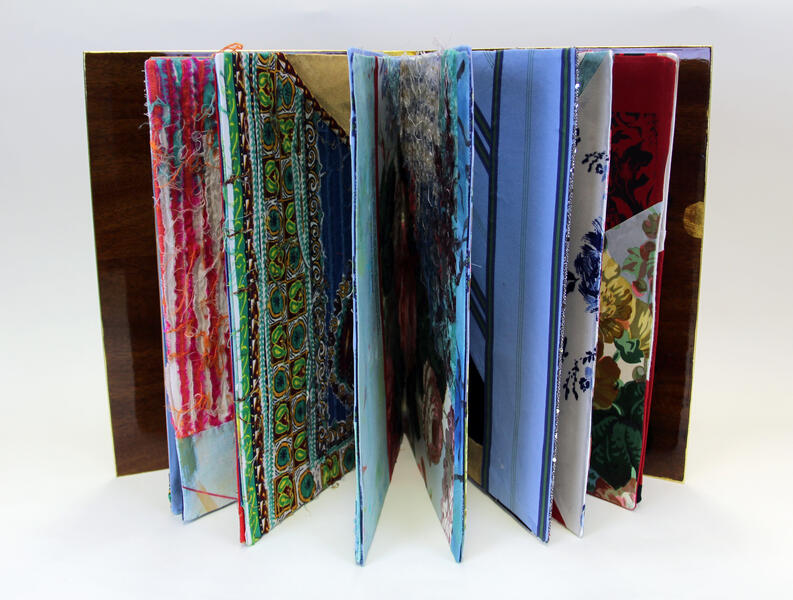 God has left usGod has left us. Gorillas are spooked.
God has left usGod has left us. Gorillas are spooked. -
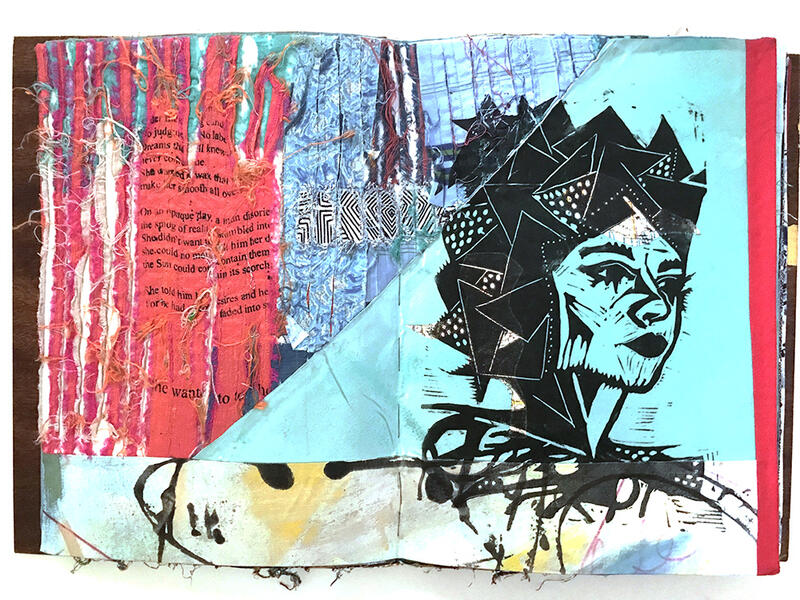 All I Havemixed media fiber arts, 16.5 x 25.5 x 2 inches, 2017
All I Havemixed media fiber arts, 16.5 x 25.5 x 2 inches, 2017 -
 All I HaveWooden cover for handmade textile book: All I Have
All I HaveWooden cover for handmade textile book: All I Have -
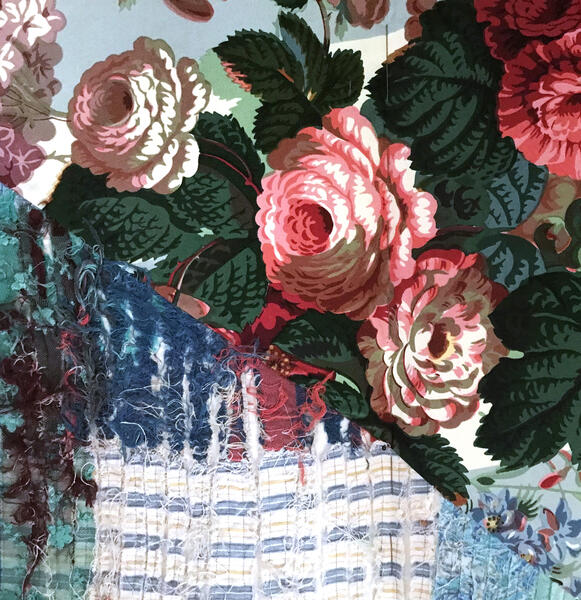 My Seventh SonMy seventh son is all I have, we must go to land that is dry and calm.
My Seventh SonMy seventh son is all I have, we must go to land that is dry and calm. -
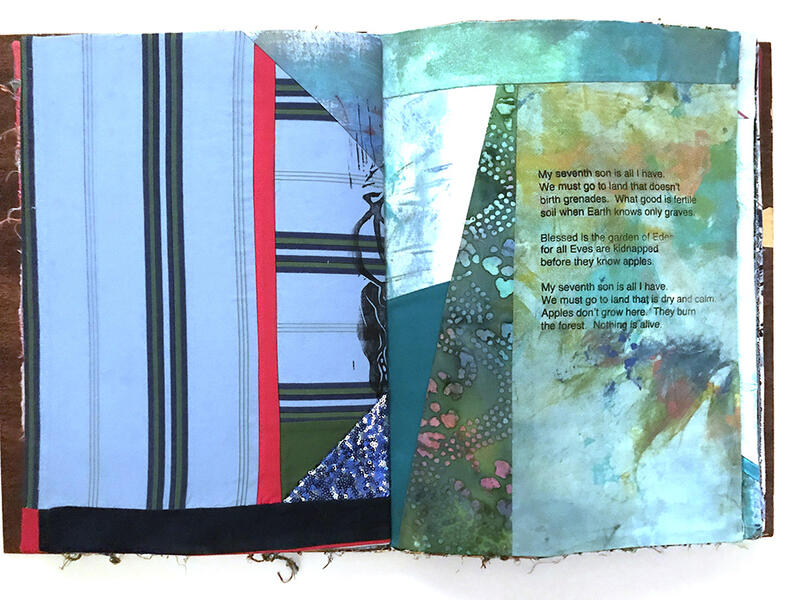 AliveNothing is alive.
AliveNothing is alive. -
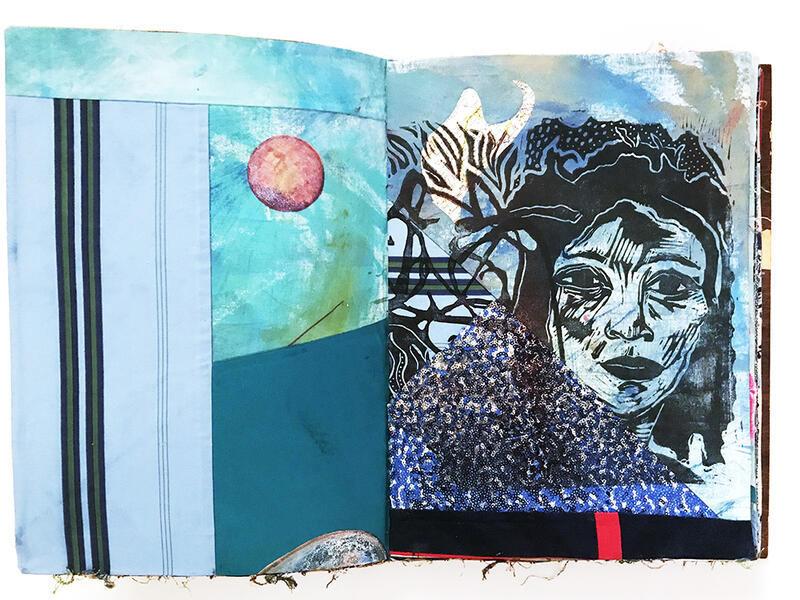 Magical RainforestOur magical rainforest lost its power.
Magical RainforestOur magical rainforest lost its power. -
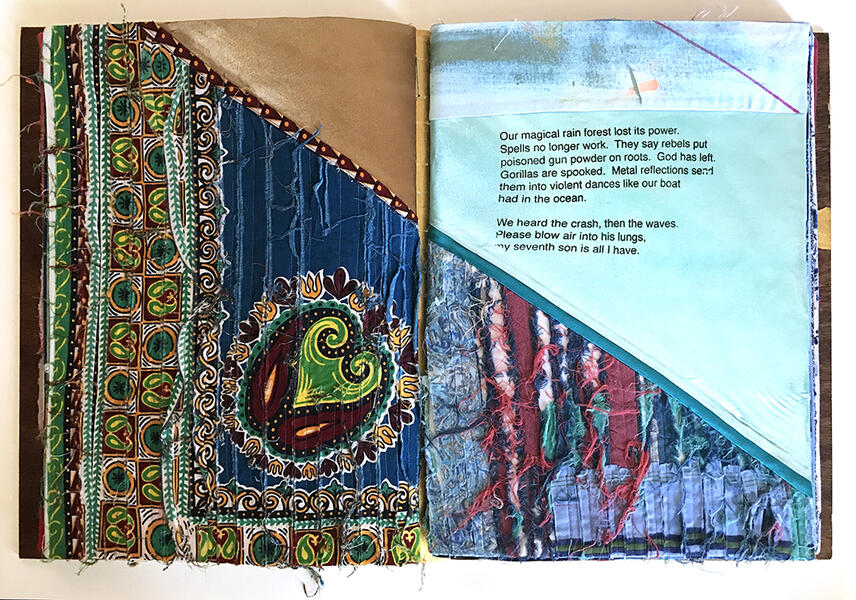 SpellsSpells no longer work.
SpellsSpells no longer work. -
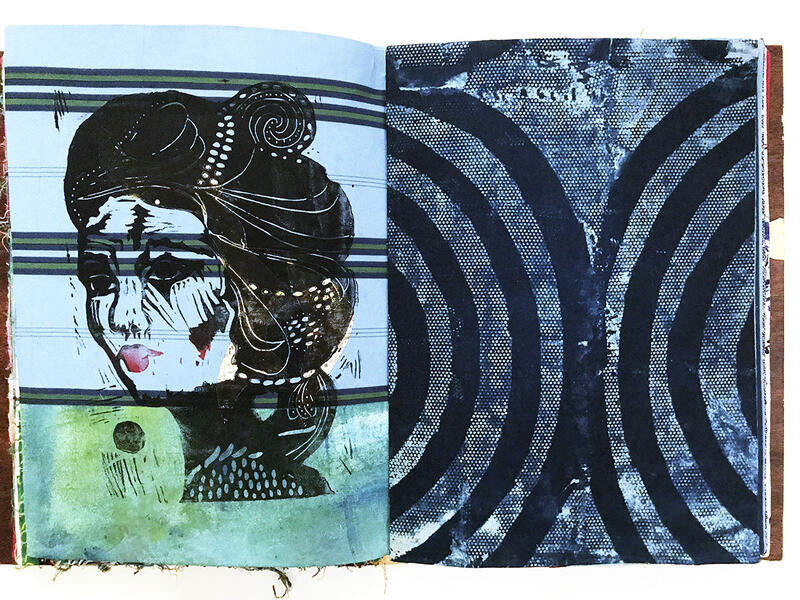 RebelsThey say rebels put poisoned gun powder on roots.
RebelsThey say rebels put poisoned gun powder on roots. -
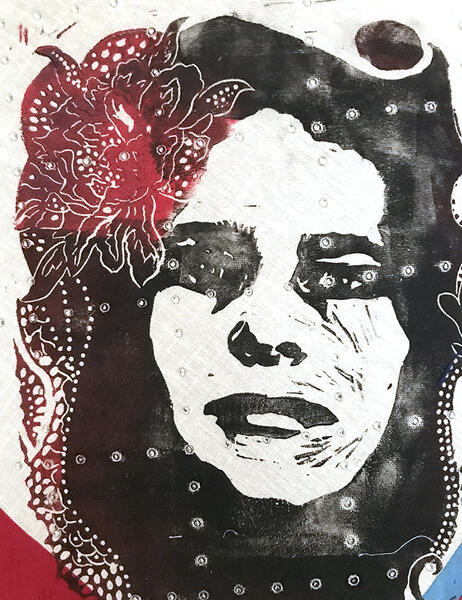 Metal ReflectionsMetal reflections send them into violent dances like our boat had in the ocean.
Metal ReflectionsMetal reflections send them into violent dances like our boat had in the ocean. -
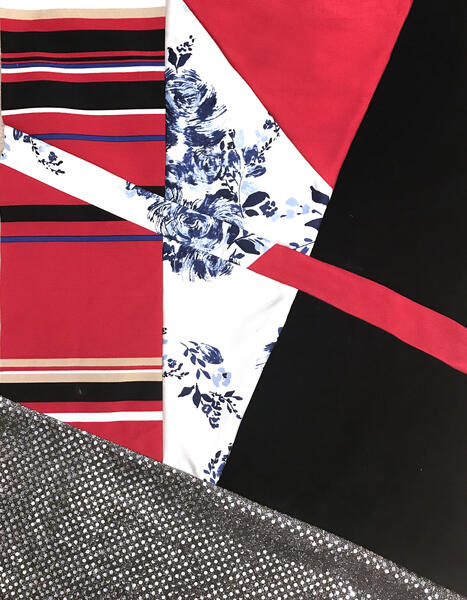 Blow AirWe heard the crash, then the waves. Please blow air into his lungs, my seventh son is all I have.
Blow AirWe heard the crash, then the waves. Please blow air into his lungs, my seventh son is all I have.
Primary Lessons
A work of art is a refined and intensified form of experience. Working with African textiles from the National Museum of African Art Library allowed me to use finely hand-woven and hand printed fabrics of the past and turn them into new stories. All of my books contain stories or information that I believe are culturally and socially significant. Marrying the book form to textiles as page material, elegantly argues that fabric doesn't just have to be wearable, but that it too has stories to tell, and has a past worth sharing. The history and stories behind the vintage textiles are essential components of the handmade books. They add extra layers of meaning that can be quite personal: Using fabrics that are personal to the author, unique to a particular culture, and/or relatable to the reader again fuses the material form of the work to its meaning and adds complexity to the work.
During my year-long project working with African textiles from the National Museum of African Art, I had the opportunity to speak with scholars from the Congo, Benin, and Nigeria. It was one of the most amazing experiences as an artist to see how art historians view the artistic process and the final art piece.
Poem for Primary Lessons
New primary school curriculum
lots of biology lessons.
Last week we dissected spinal columns
24 true, 9 false vertebrae.
Cicadas, he said, so many of them come out
at the same time that all the birds eating
them get full and leave the rest alone.
"Predator satiation," my teacher explained.
A defense mechanism.
Doesn't work with all predators, I guess.
Today they opened my teacher's throat
for all to see. The whole school was
commanded to come out at the same time.
All the guns shooting us never stopped.
Play dead.
- Suzanne Coley
Please visit my blog for details.
-
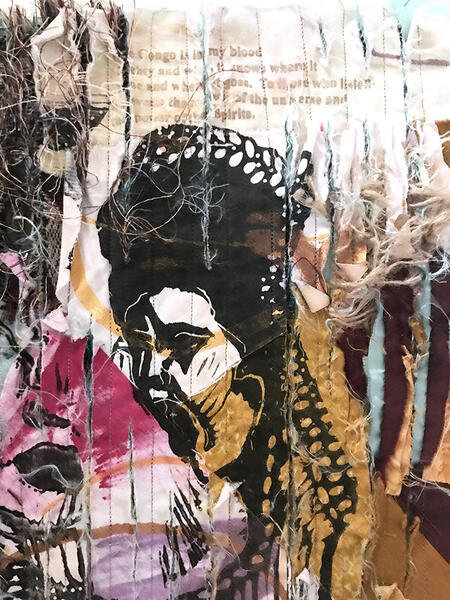 ScreamA defense mechanism.
ScreamA defense mechanism. -
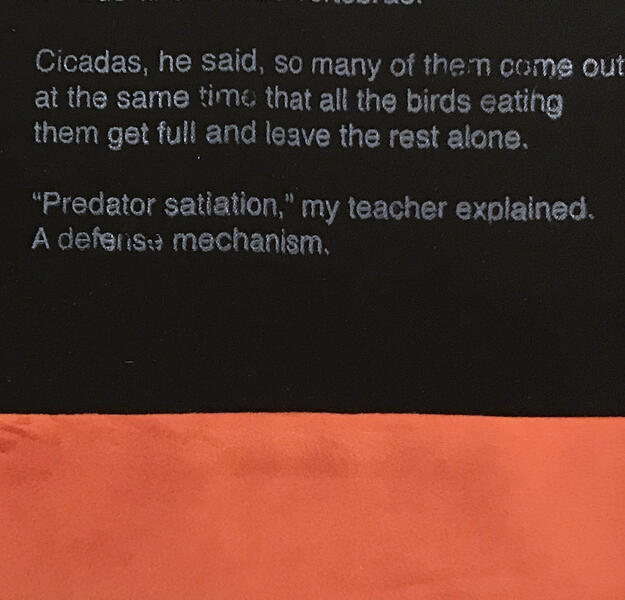 PrimaryLessonsmixed media fiber arts, 16.5 x 25.5 x 2 inches, 2017
PrimaryLessonsmixed media fiber arts, 16.5 x 25.5 x 2 inches, 2017 -
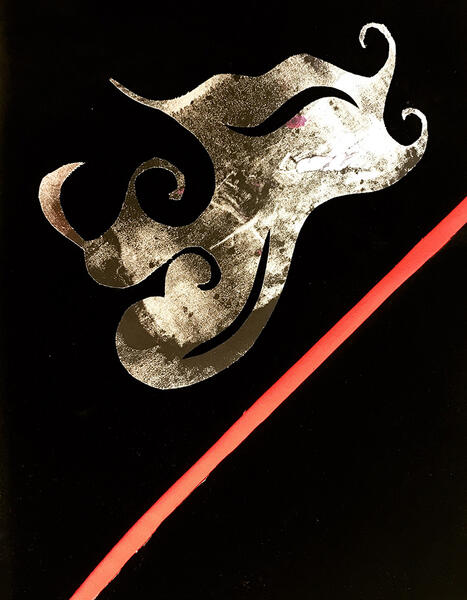 BonesToday they opened my teacher's throat . . .
BonesToday they opened my teacher's throat . . . -
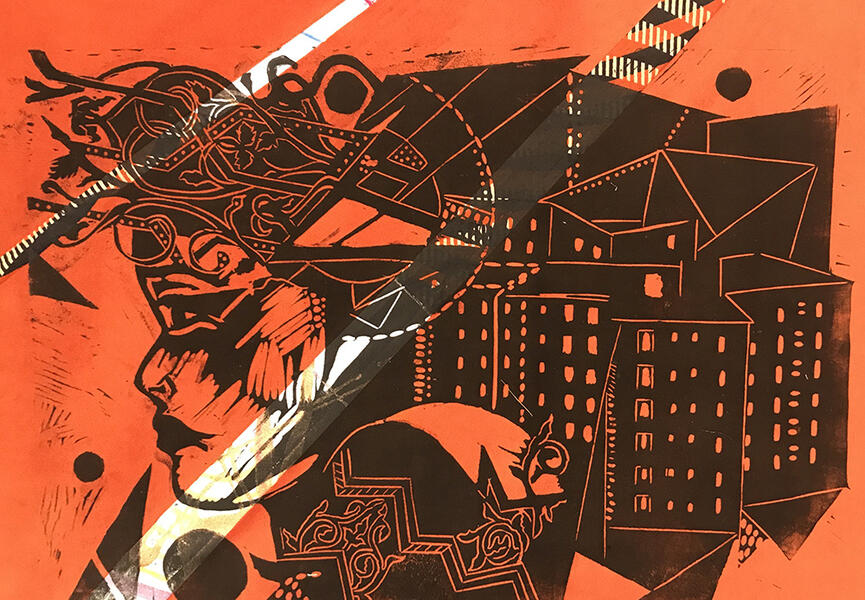 SchoolThe whole school was commanded to come out at the same time.
SchoolThe whole school was commanded to come out at the same time. -
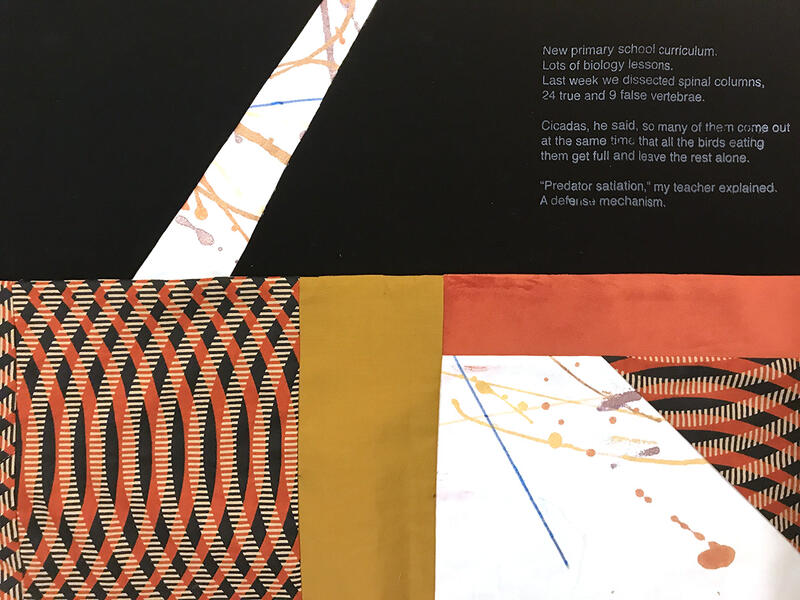 Primary LessonsNew primary school curriculum.
Primary LessonsNew primary school curriculum. -
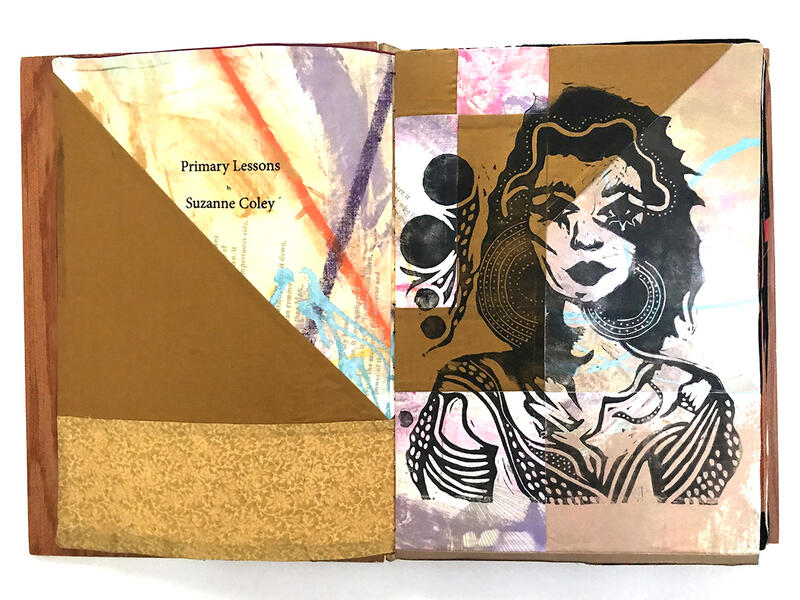 Primary Lessonsmixed media fiber art, 16.5 x 25.5 x 2 inches, 2017
Primary Lessonsmixed media fiber art, 16.5 x 25.5 x 2 inches, 2017 -
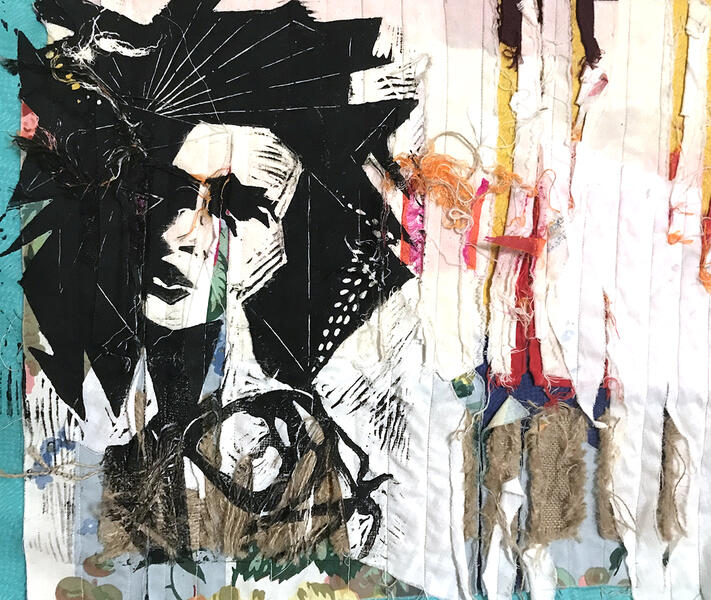 Torn but Not BrokenCicacadas, he said, so many of them come out at the same time that all the birds eating them get full and leave the rest alone.
Torn but Not BrokenCicacadas, he said, so many of them come out at the same time that all the birds eating them get full and leave the rest alone. -
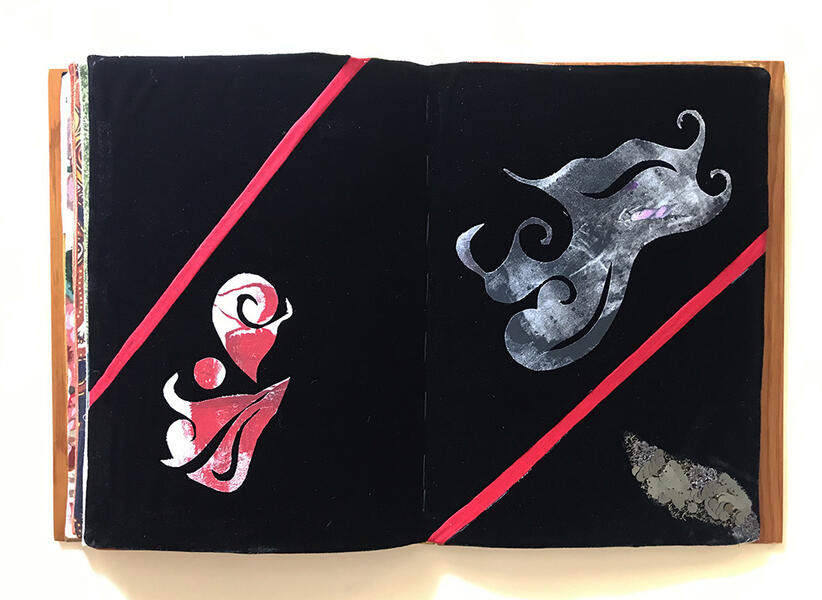 The ShootingThe shooting
The ShootingThe shooting -
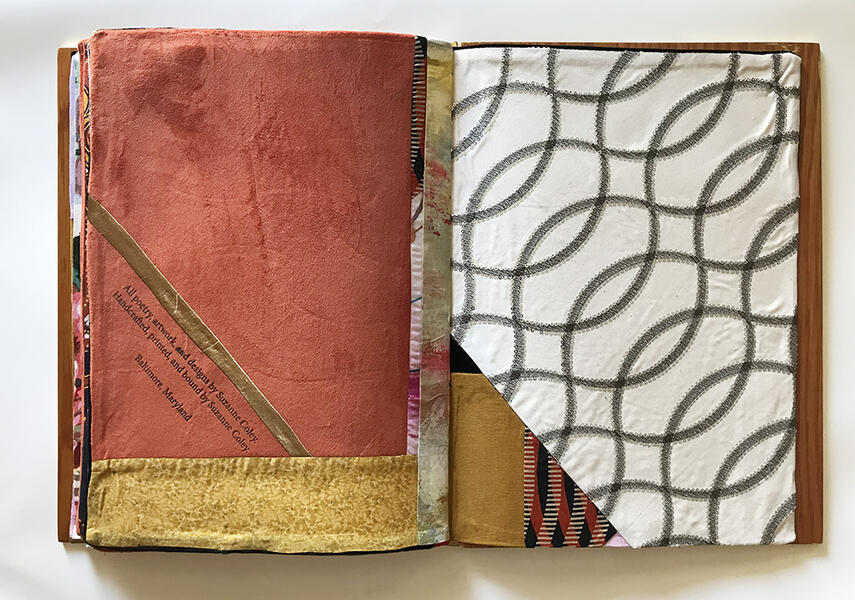 Play DeadBut all the guns shooting us never stopped. Play Dead.
Play DeadBut all the guns shooting us never stopped. Play Dead. -
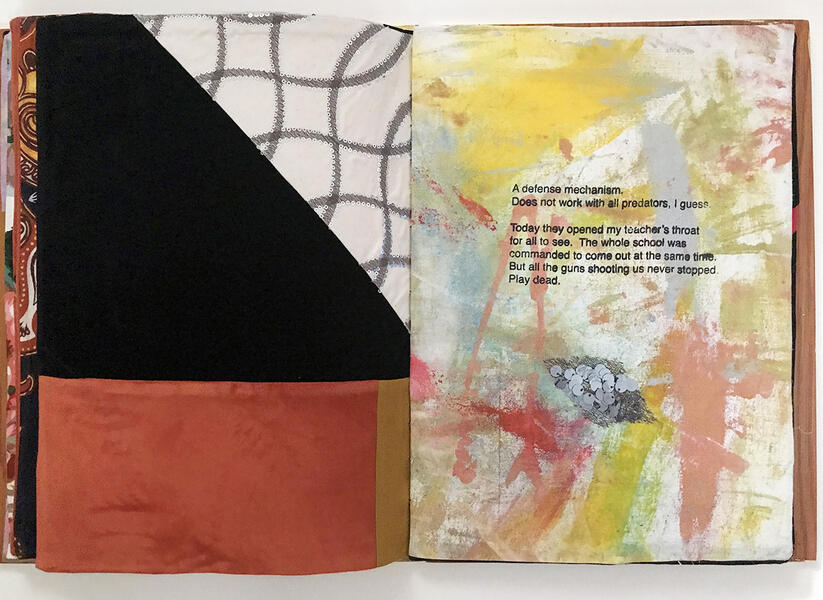 Defense MechanismA defense mechanism. Does not work with all predators, I guess.
Defense MechanismA defense mechanism. Does not work with all predators, I guess.
Burgundy Lives
-
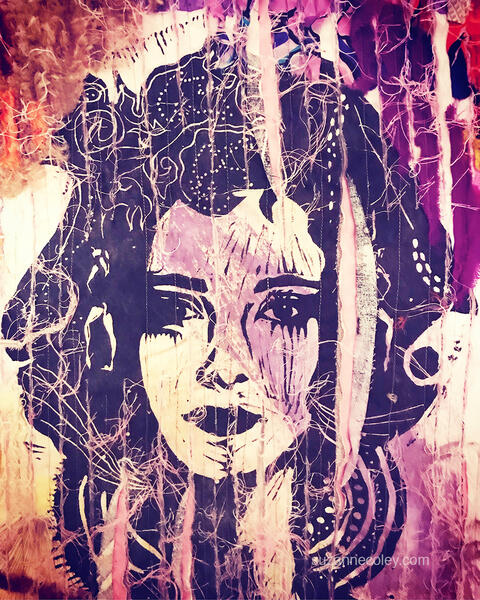 Torn But Not BrokenUnbound page, 22 x 24 inches, 2017
Torn But Not BrokenUnbound page, 22 x 24 inches, 2017 -
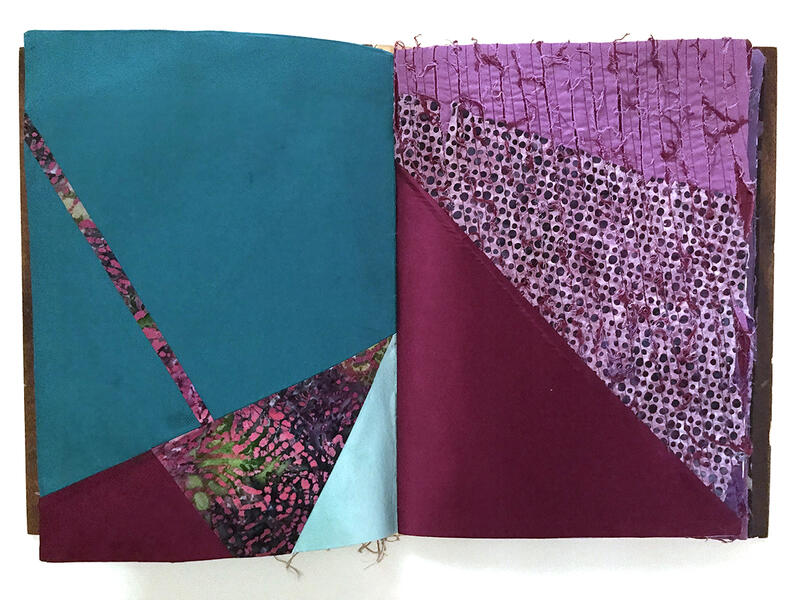 Silencemixed media fiber arts, 16.5 x 25.5 x 2 inches, 2017
Silencemixed media fiber arts, 16.5 x 25.5 x 2 inches, 2017 -
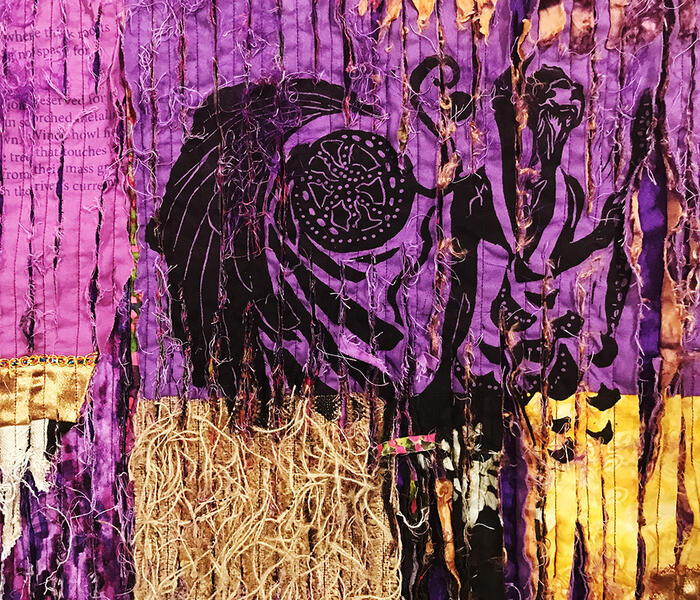 TreasuresStripping wombs of precious treasures
TreasuresStripping wombs of precious treasures -
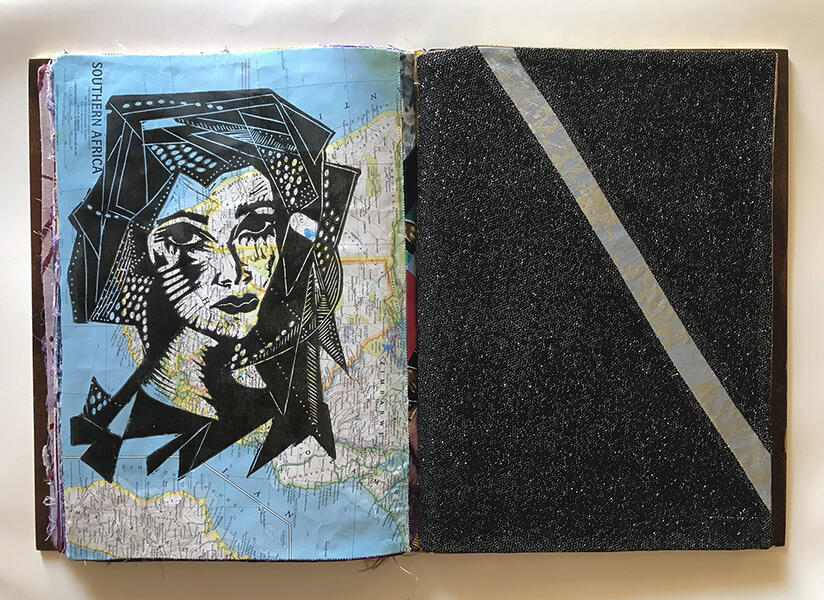 Treasure Mapshandmade textile book: mixed media fiber arts, 16.5 x 25.5 x 2 inches, 2017
Treasure Mapshandmade textile book: mixed media fiber arts, 16.5 x 25.5 x 2 inches, 2017 -
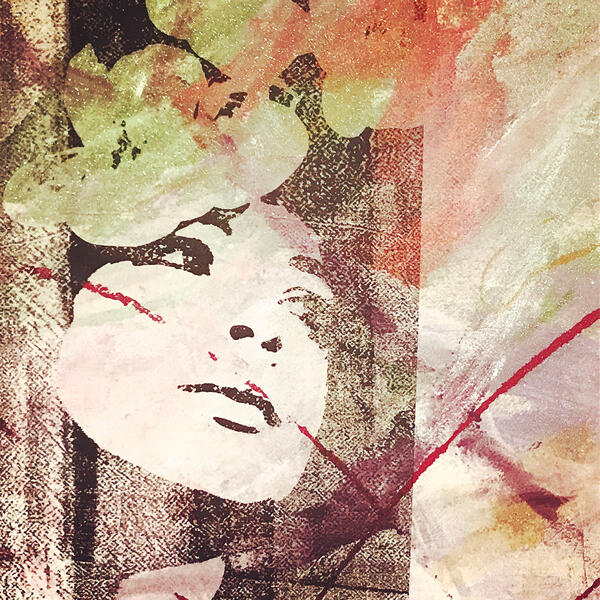 Green ParadiseGreen paradise hides truth
Green ParadiseGreen paradise hides truth -
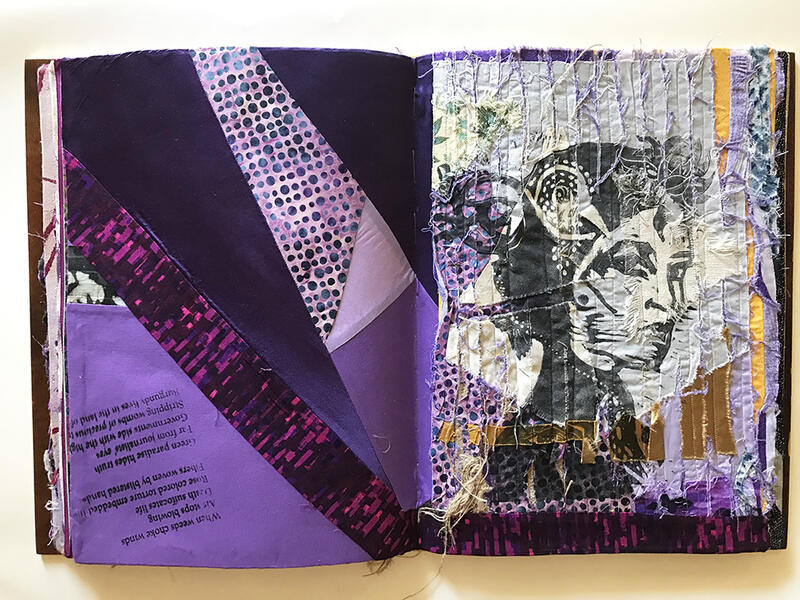 WatchingBurgundy lives in the land of green. Handmade textile book page.
WatchingBurgundy lives in the land of green. Handmade textile book page. -
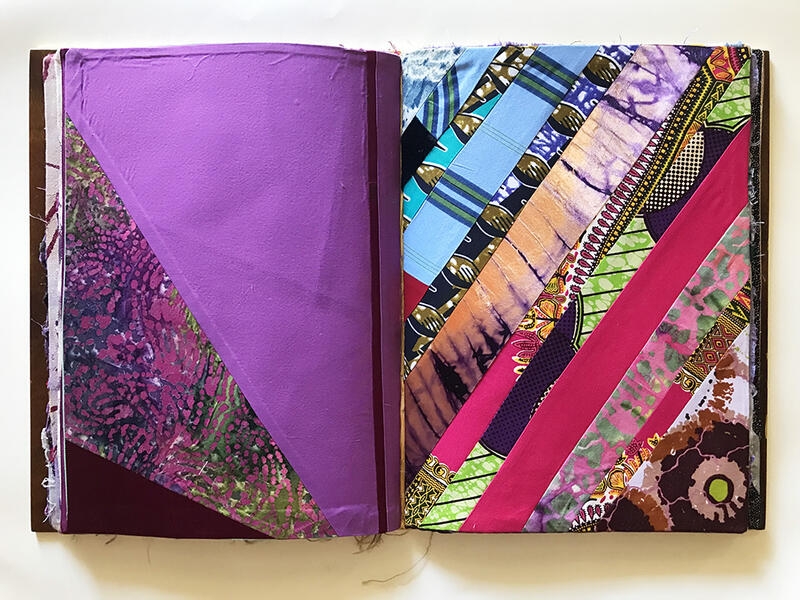 Mystical Beliefsmixed media fiber arts, 2017
Mystical Beliefsmixed media fiber arts, 2017 -
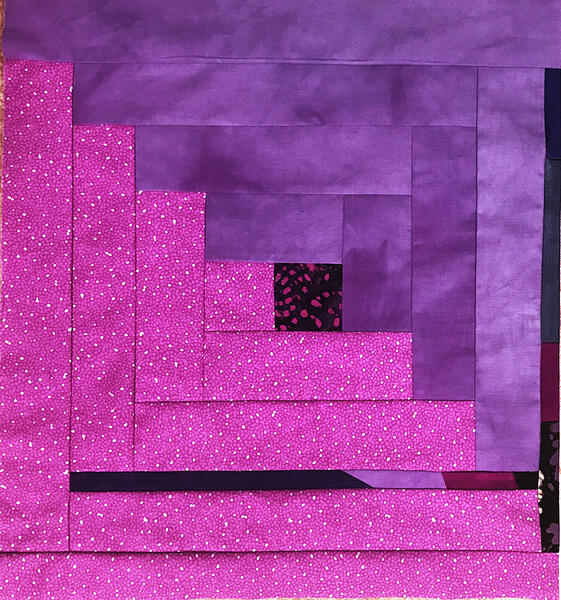 TornHandmade textile books
TornHandmade textile books -
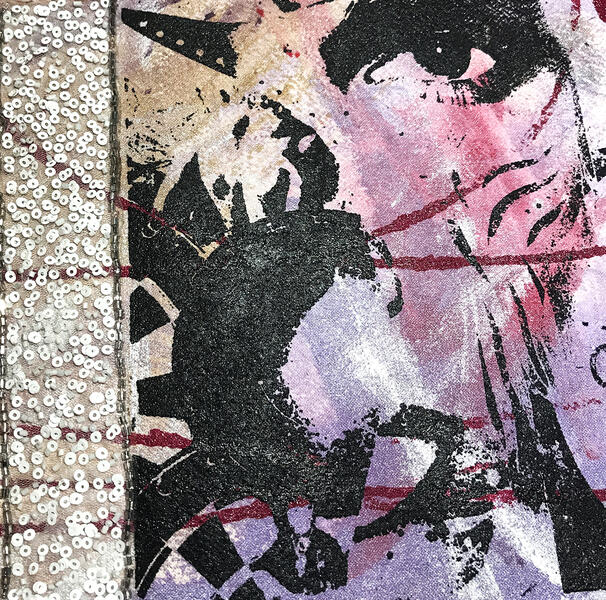 Far From, detailFar from journalists' eyes
Far From, detailFar from journalists' eyes -
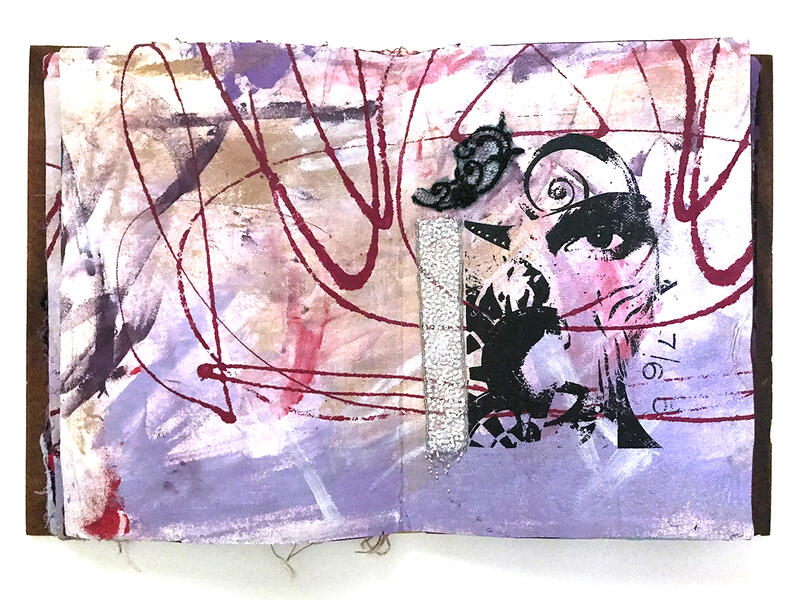 Far Frommixed media fiber arts with hand embroidery, 16.5 x 25.5 x 2 inches, 2017
Far Frommixed media fiber arts with hand embroidery, 16.5 x 25.5 x 2 inches, 2017
See Us
The fine vintage velvets and rare hand-loomed linens in See Us are innately tactile and relatable. The fabrics move and mold themselves in the hands of the reader. Even people who never or rarely work with paper will recognize the textures of fabric from their own experiences. It was important to preserve the history and story behind each piece of fabric while creating new stories. Please read more about the project in my blog.
Poetry for See Us
Doctors who crossed barbed wire borders
told me to write my story. Perhaps if others knew
what was going on here I . . . we would get help.
Help. Ease. Alleviate. Assuage.
I search for the right words with my limited
vocabulary. How do I say, "Take that 200lb
man off my 12 year old body without that
gun breaking my front teeth?"
How can anyone undo the damage.
Fix all of these broken bodies.
Revive souls already in Psychopomp's arms.
Palliate. Temper. Diminish
- Suzanne Coley
-
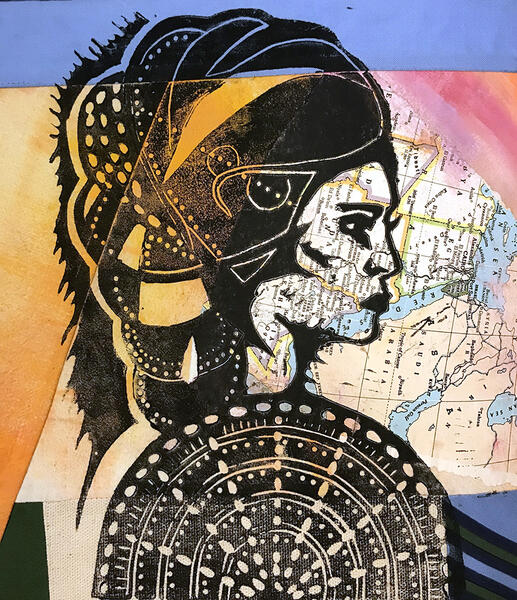 AssuageDoctors say 12 year old girls in America have birthday parties with lots of pink balloons . . .
AssuageDoctors say 12 year old girls in America have birthday parties with lots of pink balloons . . . -
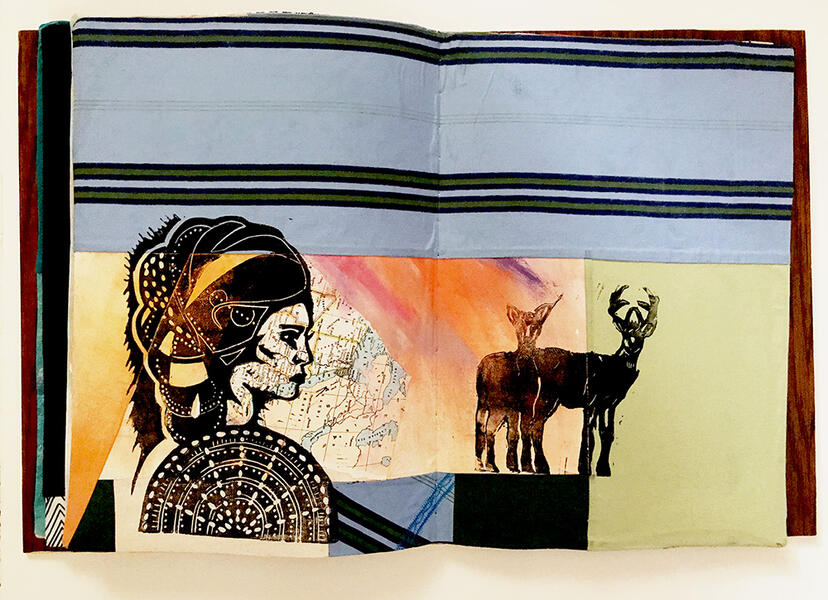 AssuageThey try to make us laugh and dance. mixed meida fiber arts, 16.5 x 25.5 x 2 inches, 2017
AssuageThey try to make us laugh and dance. mixed meida fiber arts, 16.5 x 25.5 x 2 inches, 2017 -
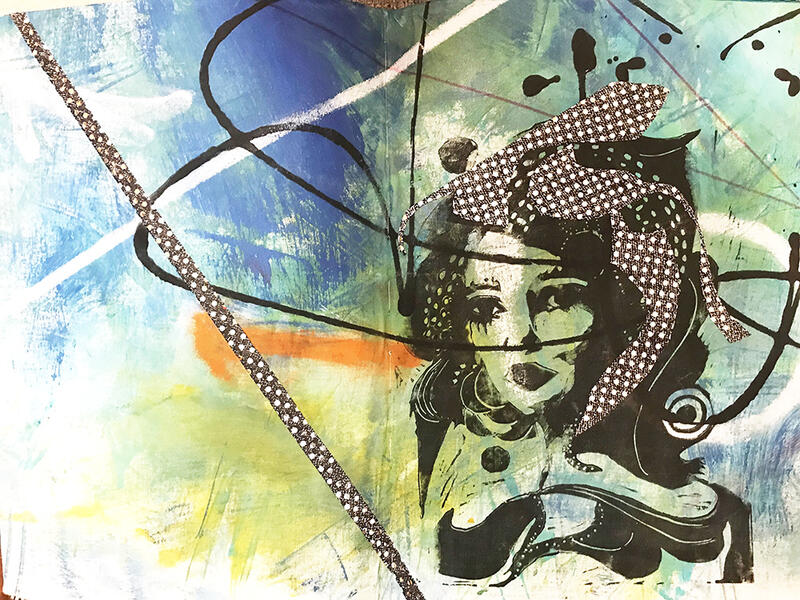 Crossing Barbed Wire BordersI want to write about delicate butterflies.
Crossing Barbed Wire BordersI want to write about delicate butterflies. -
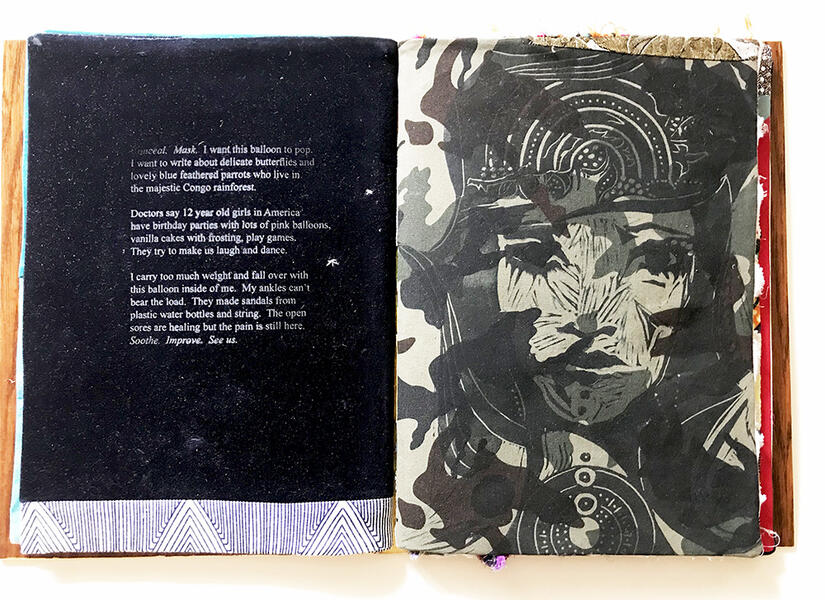 Crossing Barbed Wire BordersI want to write about lovely blue feathered parrots who live in the majestic Congo rainforest.
Crossing Barbed Wire BordersI want to write about lovely blue feathered parrots who live in the majestic Congo rainforest. -
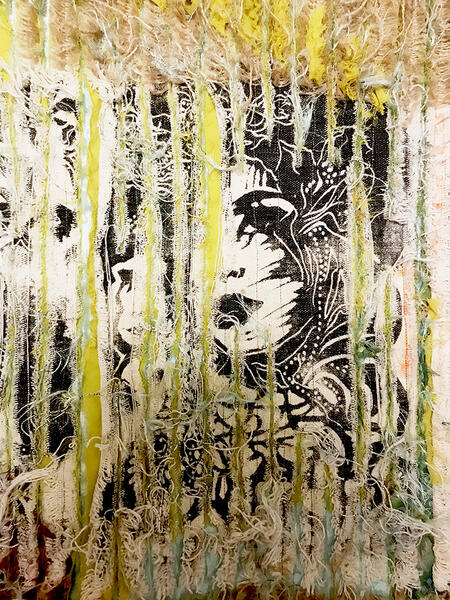 Promethean BoundThe open sores are healing but the pain is still here.
Promethean BoundThe open sores are healing but the pain is still here. -
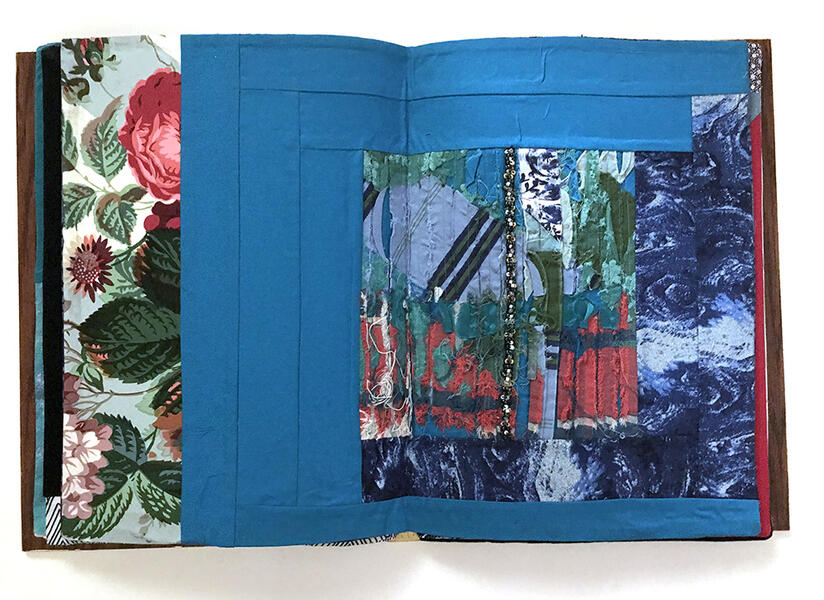 I CarryI carry too much weight and fall over with this balloon inside of me.
I CarryI carry too much weight and fall over with this balloon inside of me. -
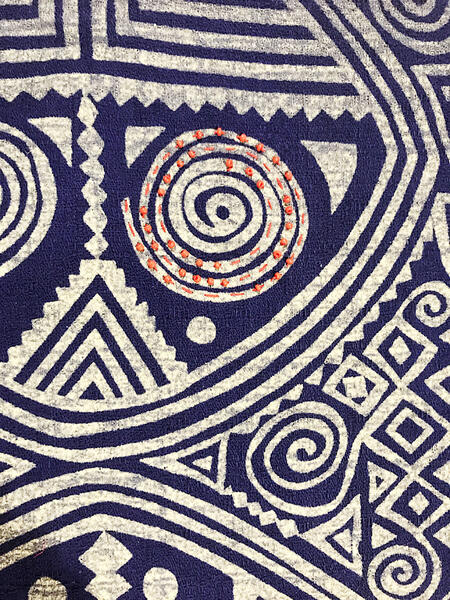 MaskMy ankles can't bear the load. They made sandals from plastic water bottles and string.
MaskMy ankles can't bear the load. They made sandals from plastic water bottles and string. -
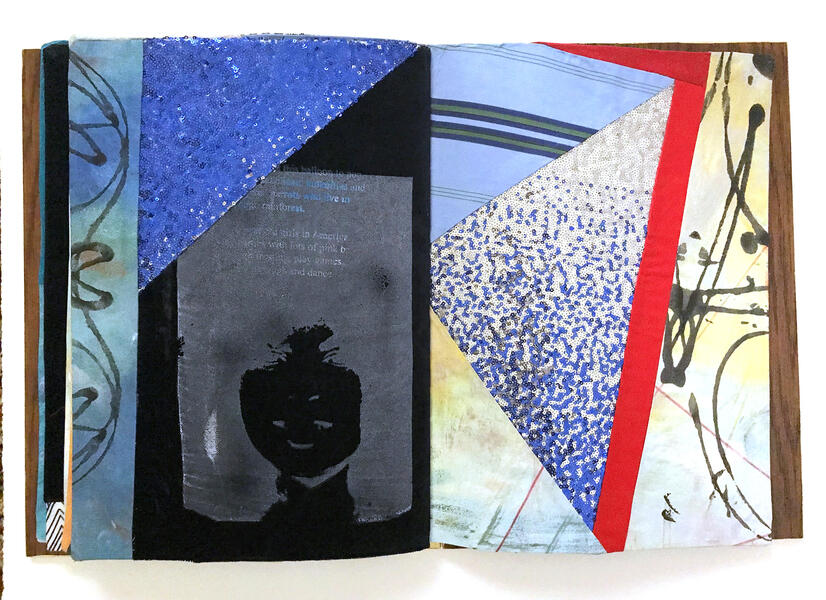 See Us, Soothemixed media fiber arts, 16.5 x 25.5 x 2 inches, 2017
See Us, Soothemixed media fiber arts, 16.5 x 25.5 x 2 inches, 2017 -
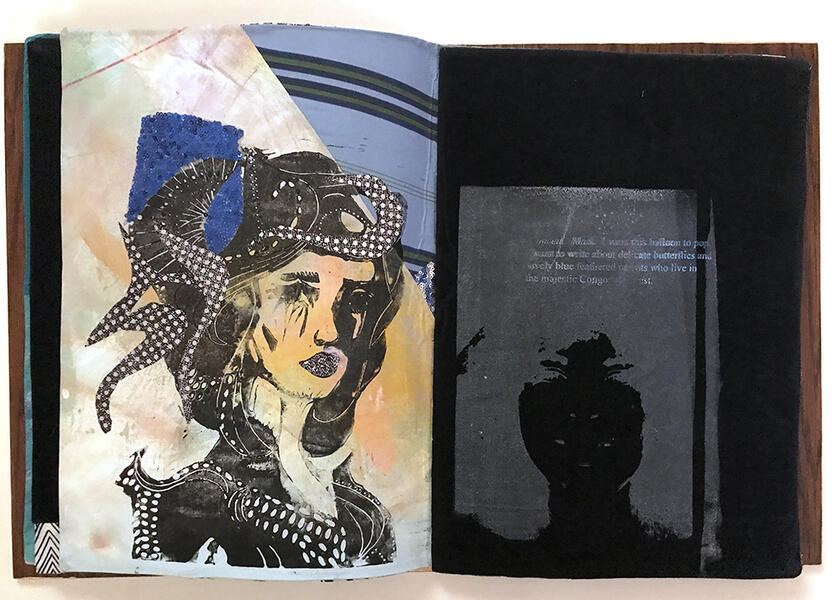 Blue Feathered ParrotsI want to write about delicate butterflies and lovely blue feathered parrots who live in the majestic Congo rainforest.
Blue Feathered ParrotsI want to write about delicate butterflies and lovely blue feathered parrots who live in the majestic Congo rainforest. -
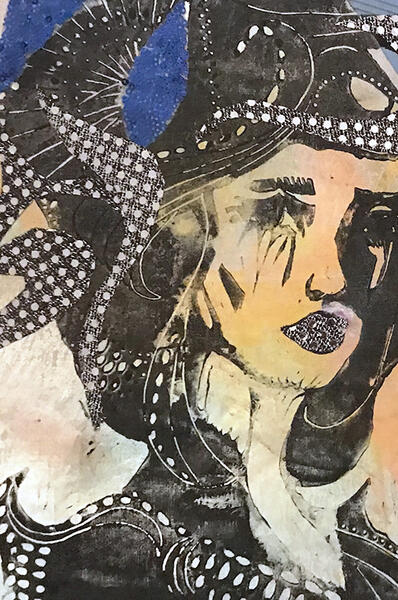 Blue Feathered Parrots, detailI want to write about delicate butterflies and lovely blue feathered parrots . . .
Blue Feathered Parrots, detailI want to write about delicate butterflies and lovely blue feathered parrots . . .
Asymmetrical Zeal
With this in mind, I created Asymmetrical Zeal. I wanted to show the strength of the textiles. Please read my blog post for more information.
-
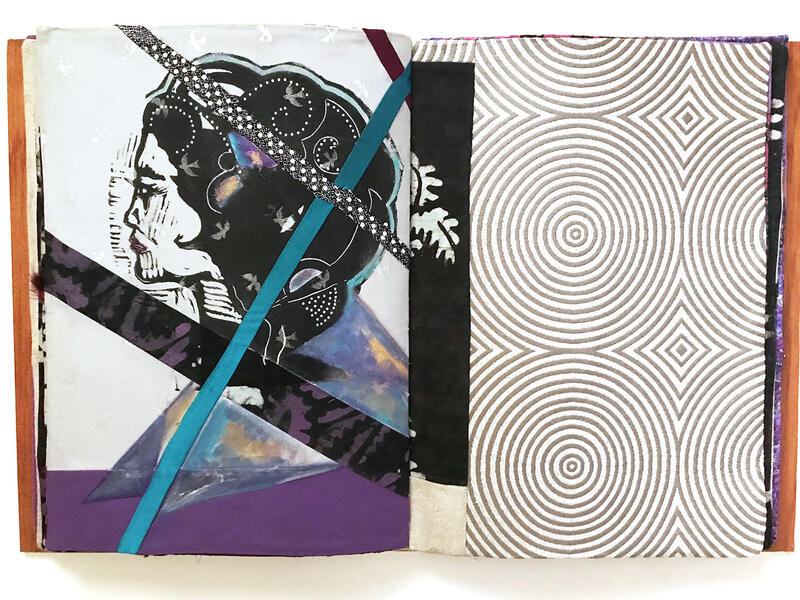 HammeringHammering metal sentiments into carved wooden statues.
HammeringHammering metal sentiments into carved wooden statues. -
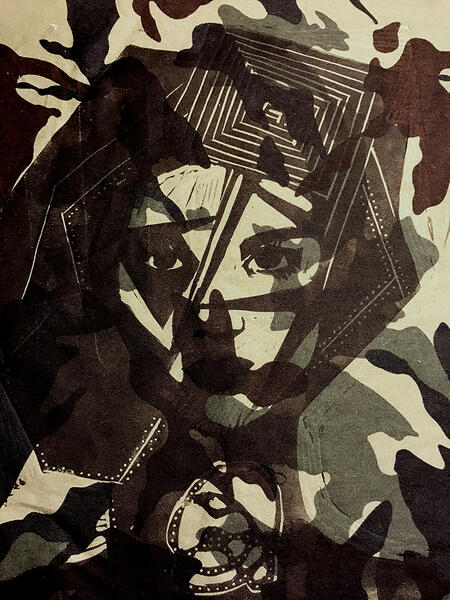 ArtemisArtemis: handprinted cotton textile page
ArtemisArtemis: handprinted cotton textile page -
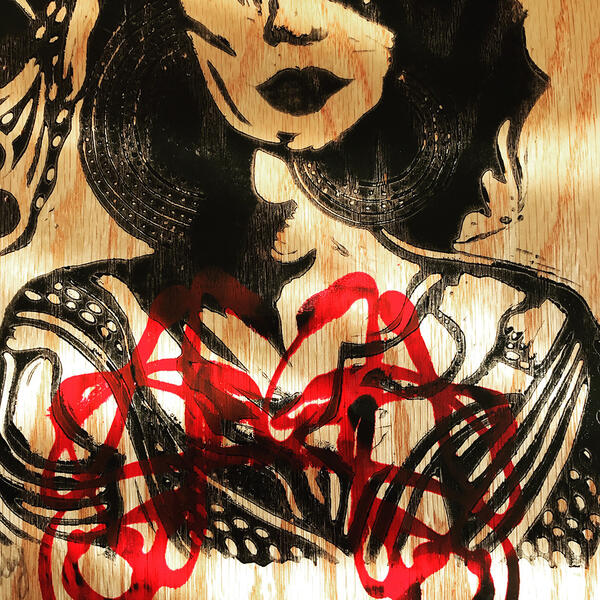 Asymmetrical Zeal, Coverwood, ink, polyurethane, 2017
Asymmetrical Zeal, Coverwood, ink, polyurethane, 2017 -
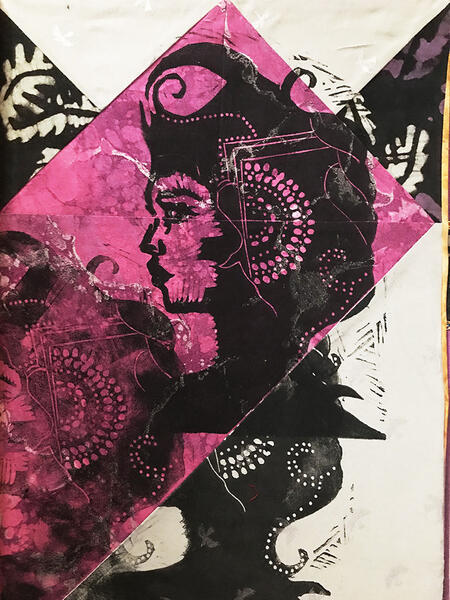 Forcing SpiritsForcing spirits past caged lines, across arid lands.
Forcing SpiritsForcing spirits past caged lines, across arid lands. -
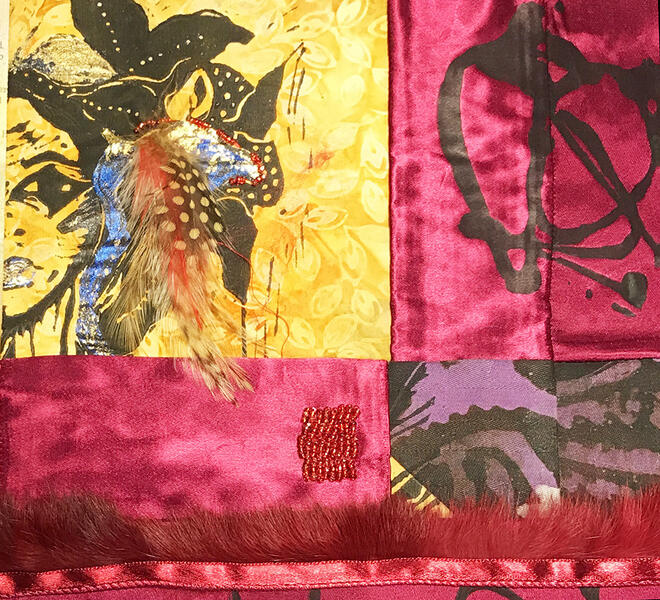 Motherhood, detailMotherhood gives birth to new vulnerabilities.
Motherhood, detailMotherhood gives birth to new vulnerabilities. -
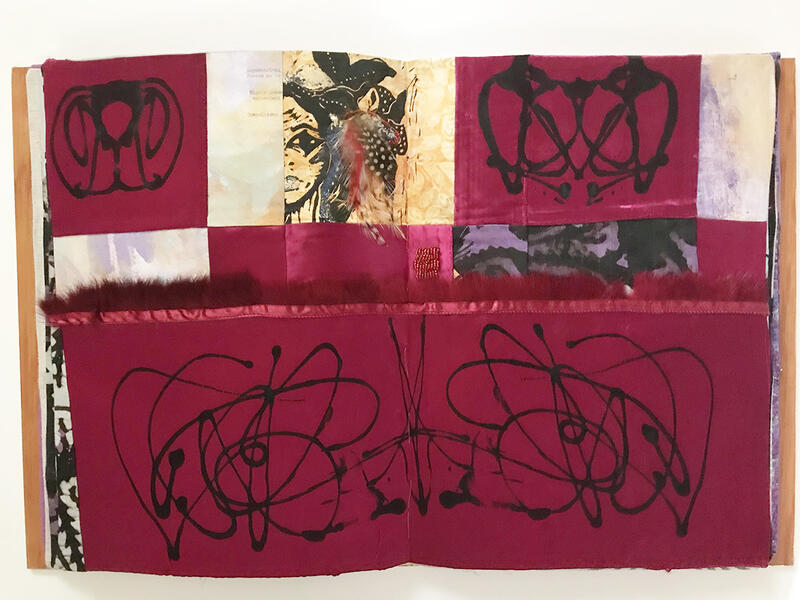 MotherhoodRapscallions stalk under thick sentimental canopies.
MotherhoodRapscallions stalk under thick sentimental canopies. -
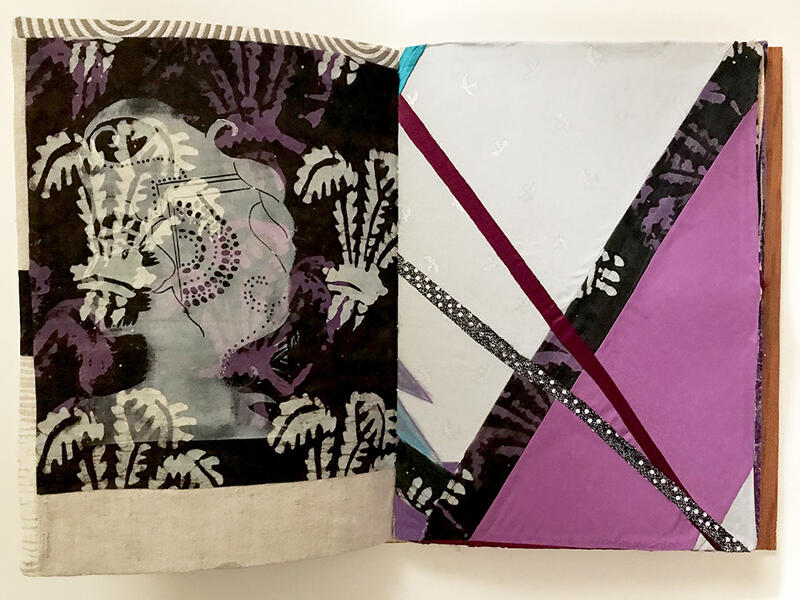 Criss CrossSun scorched metallic hopes melt before dawn.
Criss CrossSun scorched metallic hopes melt before dawn. -
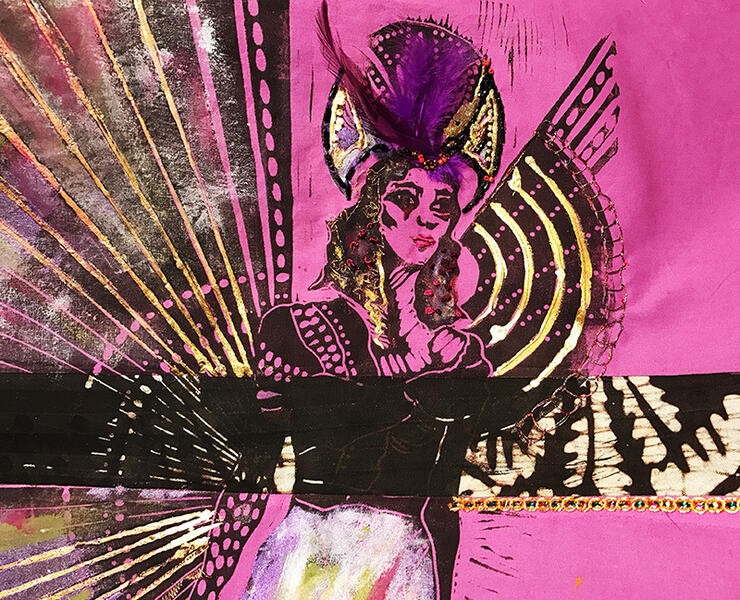 Metallic HopesWinds howl fiercely
Metallic HopesWinds howl fiercely -
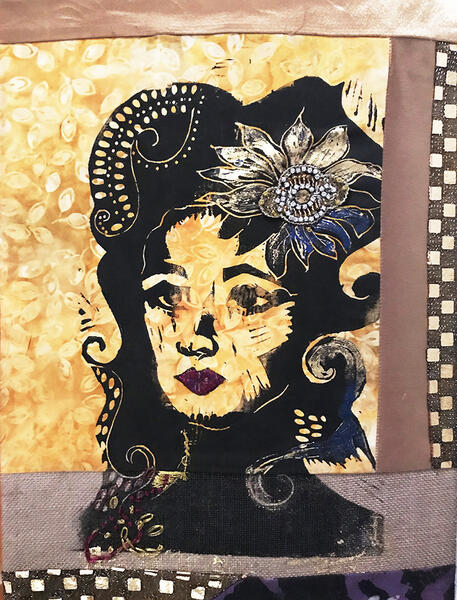 EmotionsRemoving emotions from mass graves
EmotionsRemoving emotions from mass graves -
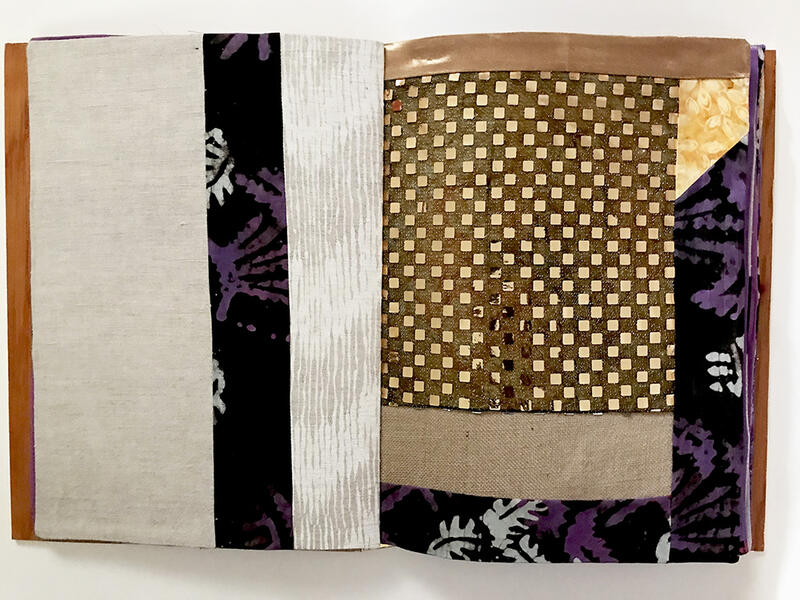 Gold Squaresletting them flow with the river's current.
Gold Squaresletting them flow with the river's current.
Goats
-
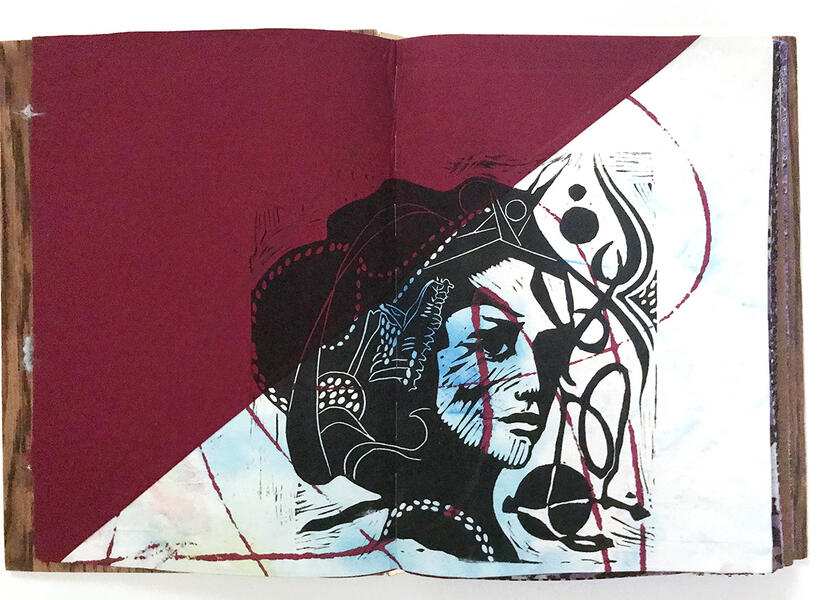 LionsLions learned from your courage. **Mixed media fiber arts, 16.5 x 25.5 x 2 inches, 2017
LionsLions learned from your courage. **Mixed media fiber arts, 16.5 x 25.5 x 2 inches, 2017 -
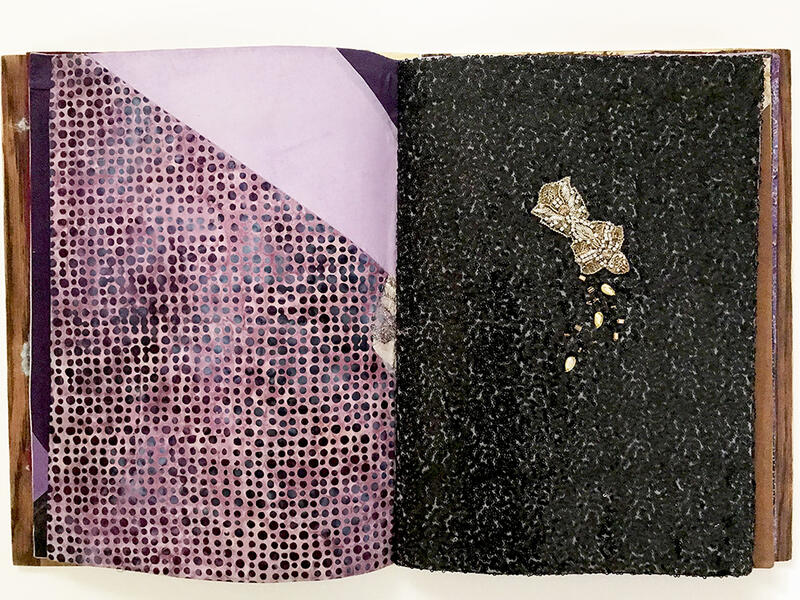 MonkeysMonkeys basked in your splendor.
MonkeysMonkeys basked in your splendor. -
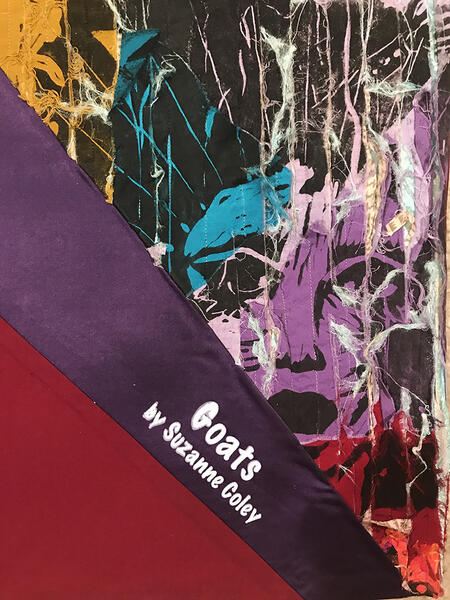 GoatsA thousand shades of green was your kingdom.
GoatsA thousand shades of green was your kingdom. -
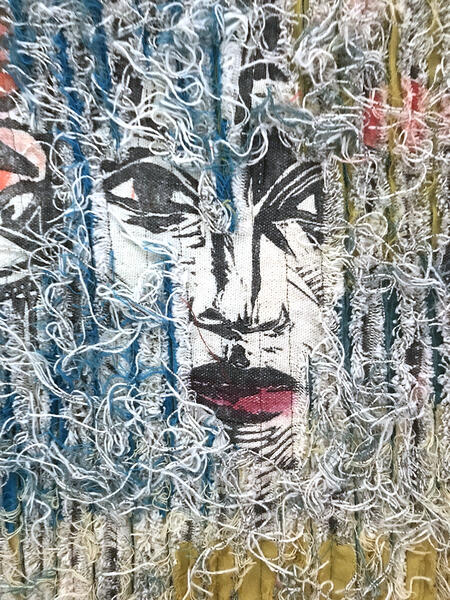 Burning AirWet wasteland, with your burning air, we inhale suffering
Burning AirWet wasteland, with your burning air, we inhale suffering -
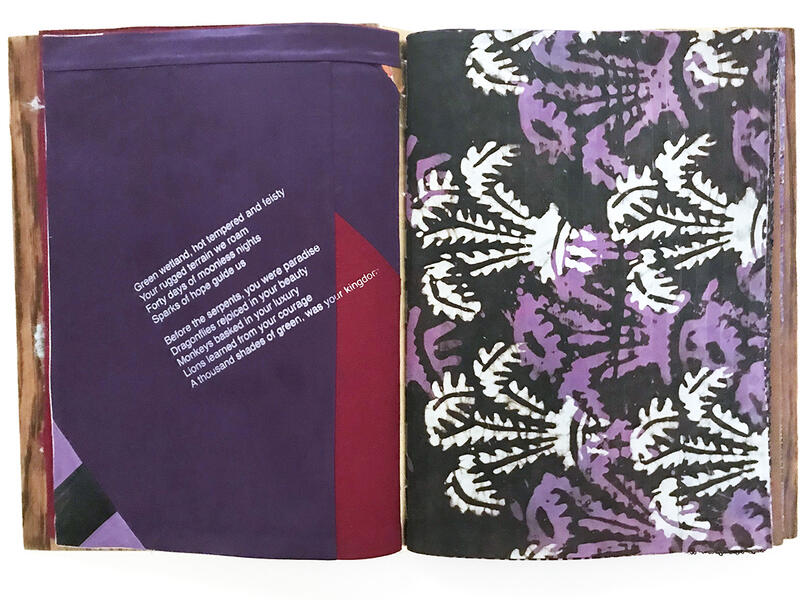 Bellies BloatWet wasteland, our bellies bloat.
Bellies BloatWet wasteland, our bellies bloat. -
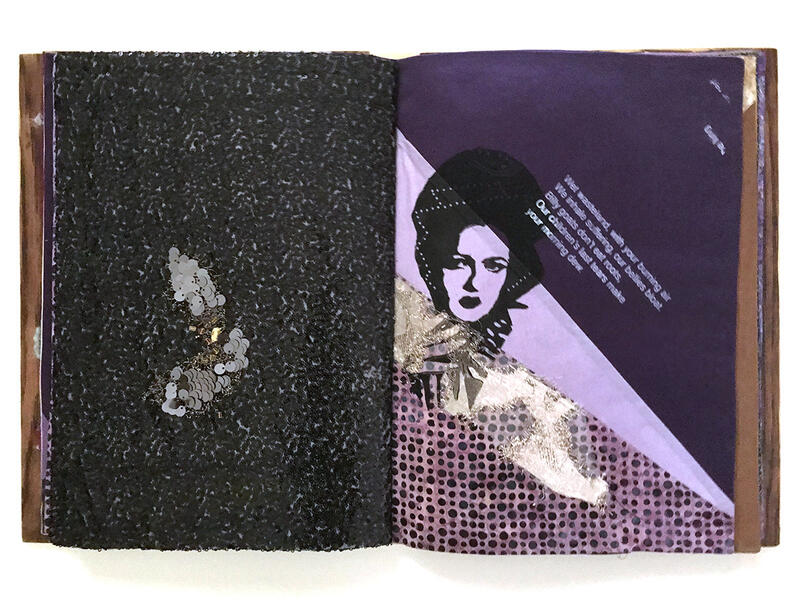 GoatsGreen wetland, hot tempered and feisty, your rugged terrain we roam.
GoatsGreen wetland, hot tempered and feisty, your rugged terrain we roam. -
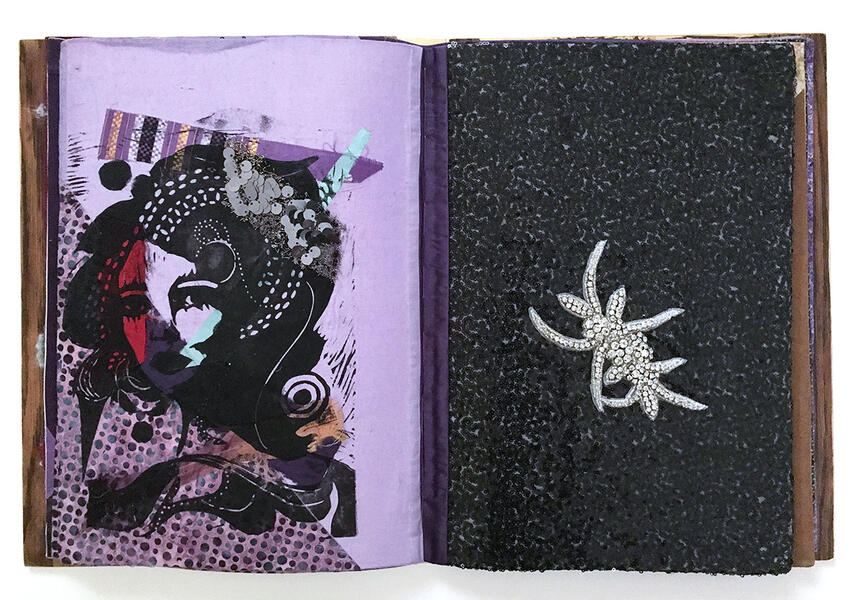 Goats: Rootsmixed media fiber art with hand beading, 16.5 x 25.5 x 2 inches, 2017
Goats: Rootsmixed media fiber art with hand beading, 16.5 x 25.5 x 2 inches, 2017 -
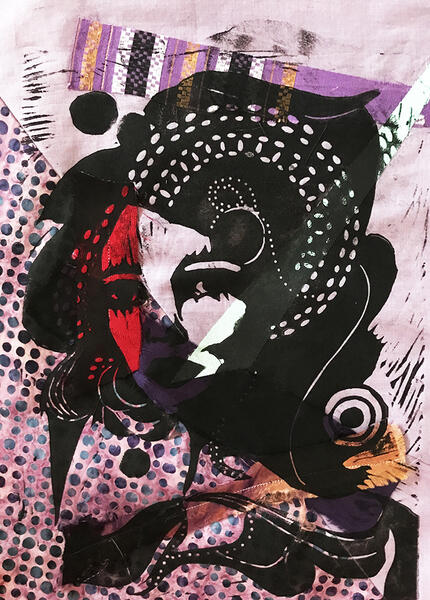 Goats:Rootsdetail
Goats:Rootsdetail -
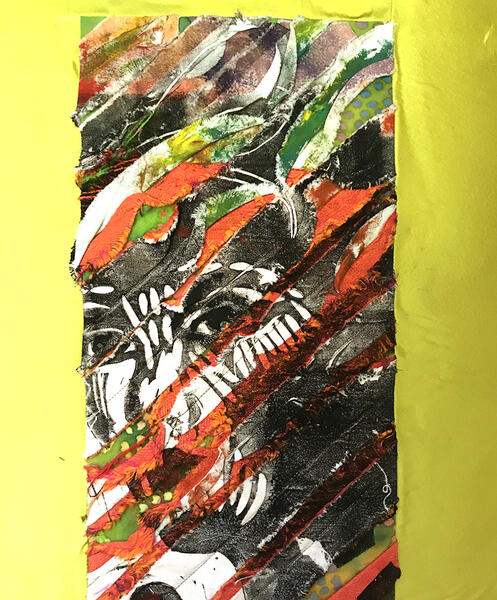 Billy GoatsBilly goats don't eat roots.
Billy GoatsBilly goats don't eat roots. -
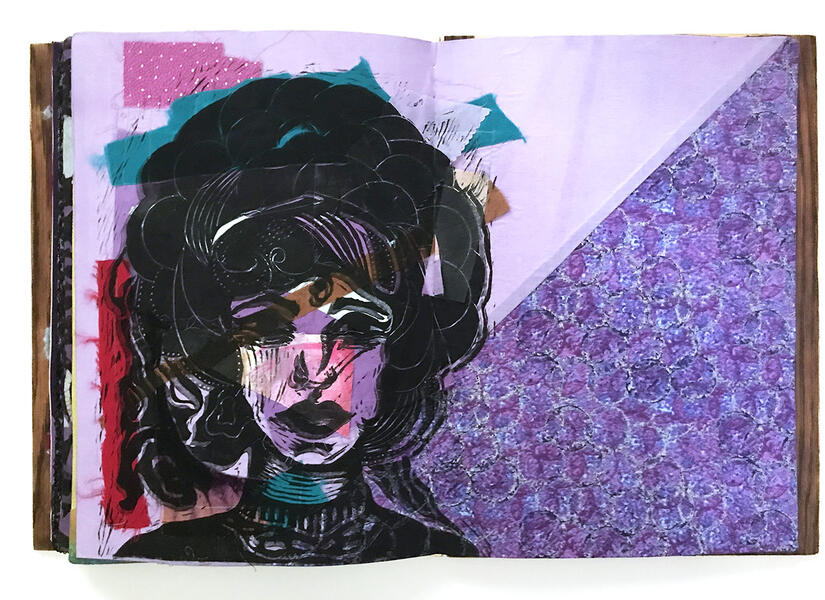 Morning DewOur children's last tears make your morning dew.
Morning DewOur children's last tears make your morning dew.
Exodus
Don't spray so much cleaner! I pay money for it, you know.
Why do dragonflies come out of mudbugs, uh, you ask?
Because they think they are better than everybody, that's why. Because they don't want to be working at this truck stop cleaning windshields all their lives like us.
I told that boy: Nothing good will happen if you try to make it to Europe. But no, he wanted "normal life." He wanted Sweden. So he spread his wings and made it all the way to Algeria. Was beaten and robbed three times along the way. All so that he could drown in the sea.
At least they don't send dragonfly mothers pictures of their squished son
- Suzanne Coley
-
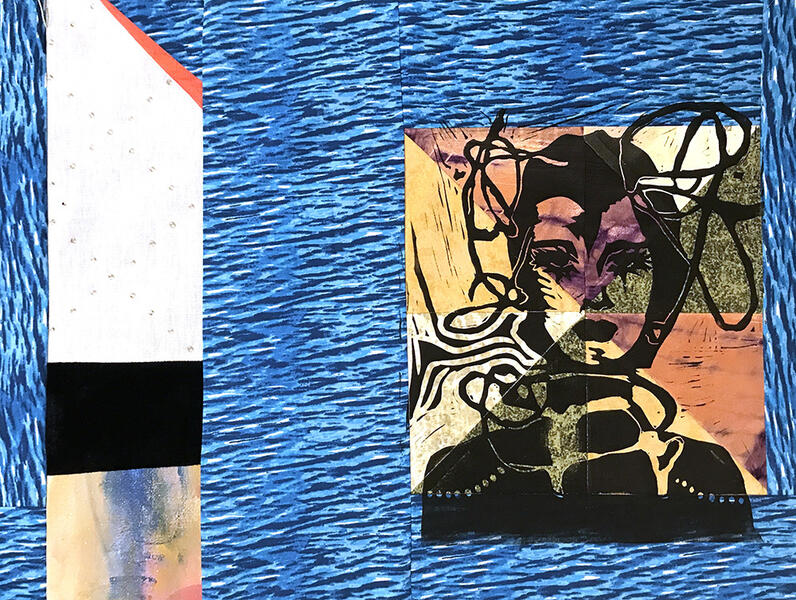 The Seamixed media fiber arts, 16.5 x 25.5 x 2 inches, 2017
The Seamixed media fiber arts, 16.5 x 25.5 x 2 inches, 2017 -
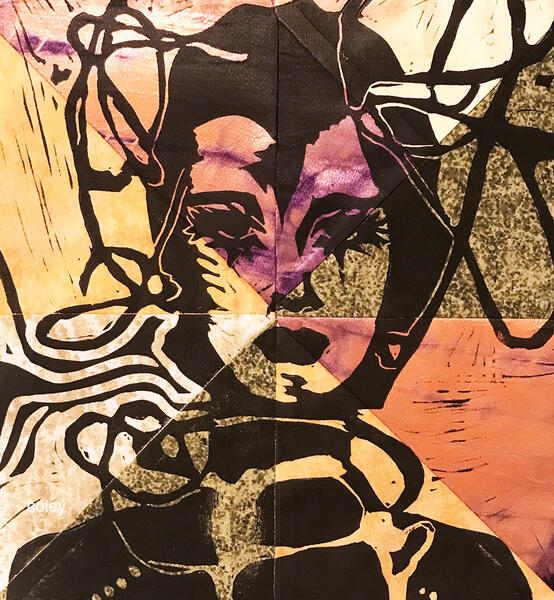 The Sea, detailCrossing the sea . . .
The Sea, detailCrossing the sea . . . -
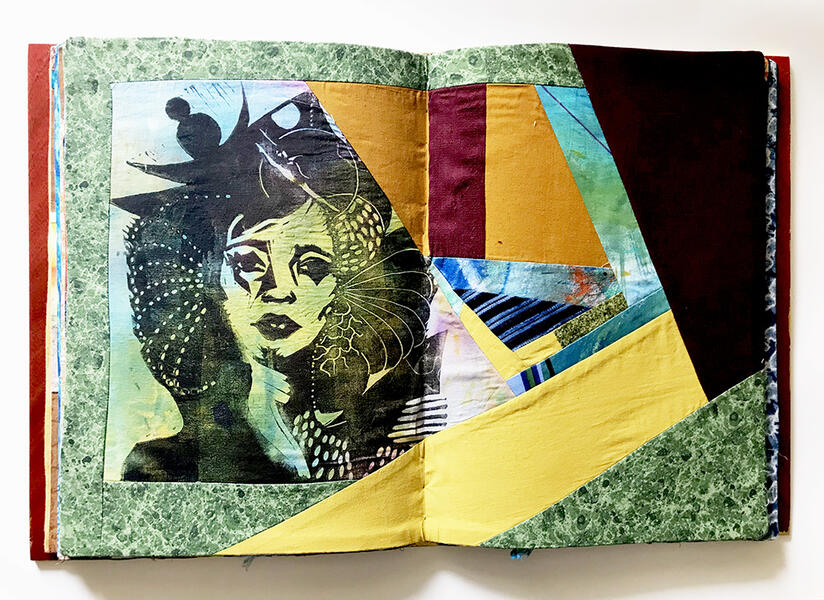 Migrantsmixed media fiber arts, 16.5 x 25.5 x 2 inches, 2017
Migrantsmixed media fiber arts, 16.5 x 25.5 x 2 inches, 2017 -
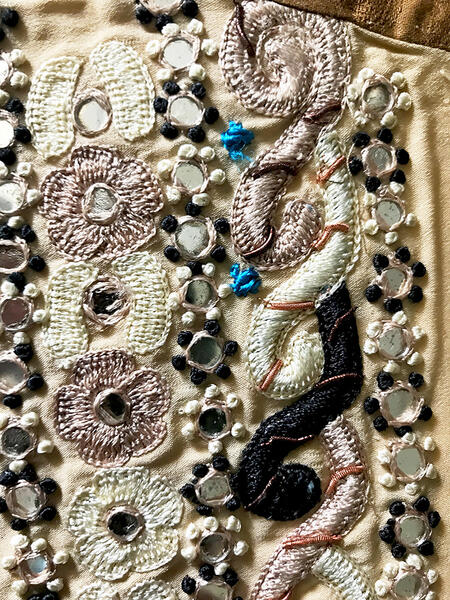 Migrantshandmade textile book page. hand embroidery. 16.5 x 25.5 x 2 inches, 2017
Migrantshandmade textile book page. hand embroidery. 16.5 x 25.5 x 2 inches, 2017 -
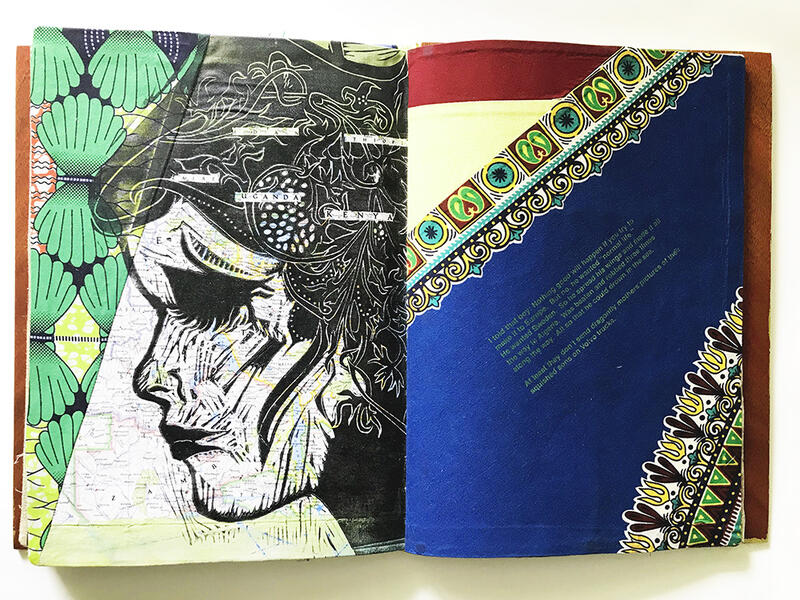 Barbed WiresI told that boy: Nothing good will happen if you try to make it to Europe.
Barbed WiresI told that boy: Nothing good will happen if you try to make it to Europe. -
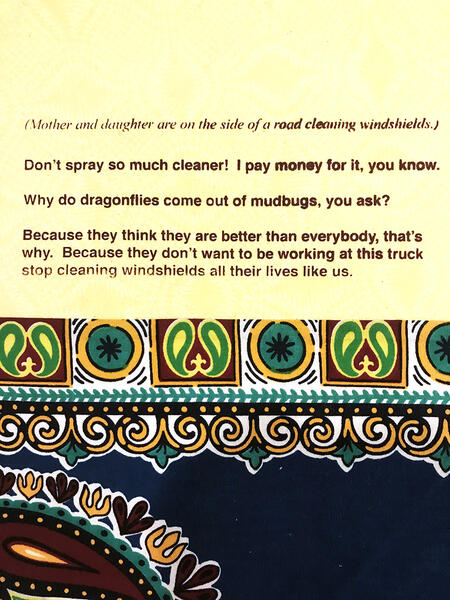 ExodusBut no, he wanted "normal life." He wanted Sweden.
ExodusBut no, he wanted "normal life." He wanted Sweden. -
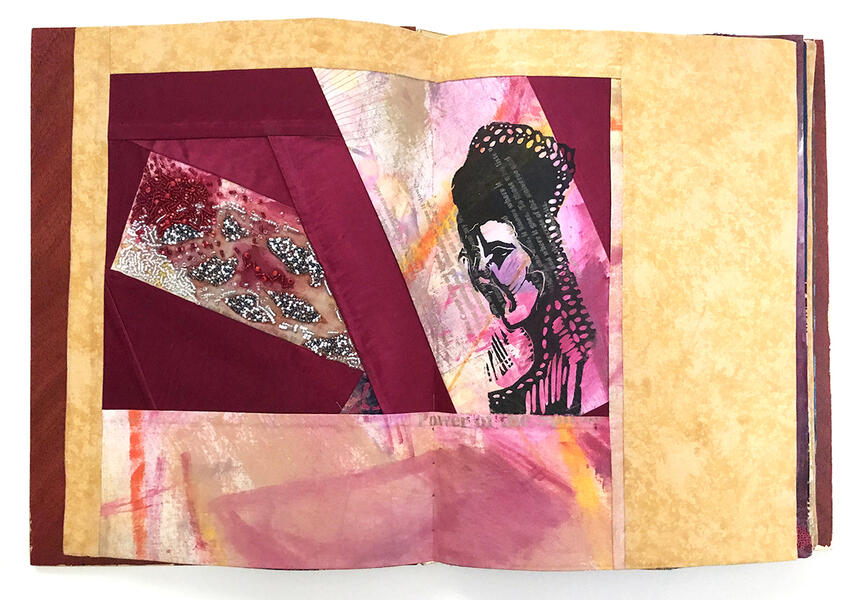 ExodusSo he spread his wings and made it all the way to Algeria.
ExodusSo he spread his wings and made it all the way to Algeria. -
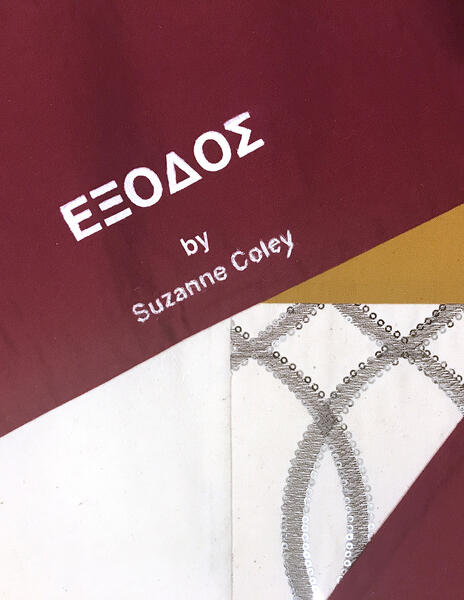 Exodusmixed media fiber art (with hand embroidery), 16.5 x 25.5 inches, 2017
Exodusmixed media fiber art (with hand embroidery), 16.5 x 25.5 inches, 2017 -
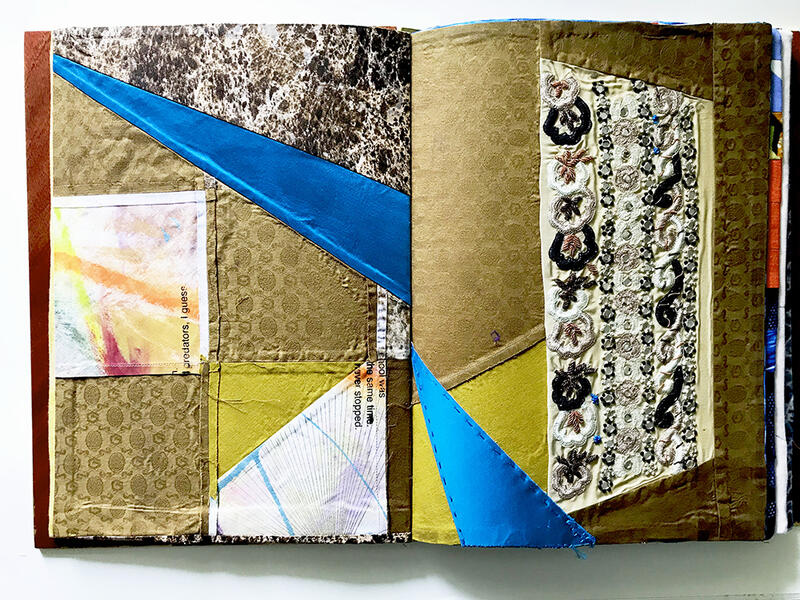 ExodusHe was beaten and robbed three times along the way. All so that he could drown in the sea.
ExodusHe was beaten and robbed three times along the way. All so that he could drown in the sea. -
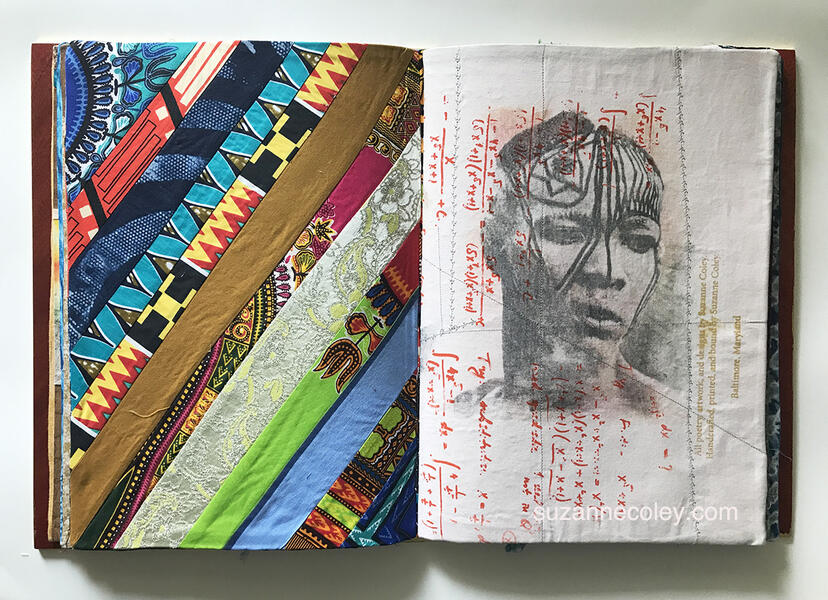 ExodusAt least they don't send dragonfly mothers pictures of their squished sons on Volvo trucks.
ExodusAt least they don't send dragonfly mothers pictures of their squished sons on Volvo trucks.
King
Please read my blog posts for more details.
Poetry for King
when i grow up i want to be king
with body guards dressed in red
on horses with royal names
shielding me from bullies
no more broken bones
when i grow up i want to be king
like the one on postcards my teacher
sent me: King Goerge VI
i don't care about castles, a mud brick
house will do. i don't need electricity
i see through darkness
when i grow up i want to be king
to have a team of doctors,
to take care of my whole family.
to stop my brother from throwing up red.
when i grow up, i want to be king
when people see me, they will say hello
even if the sun isn't shining.
when i grow up
tell them to water
the hurt
grow i,
girls can
be
girls can
be
i, kings
when
- Suzanne Coley
-
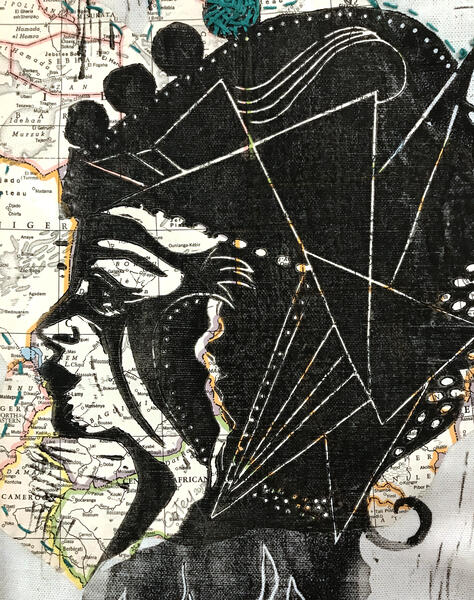 Girl Kingswhen i grow up i want to be king
Girl Kingswhen i grow up i want to be king -
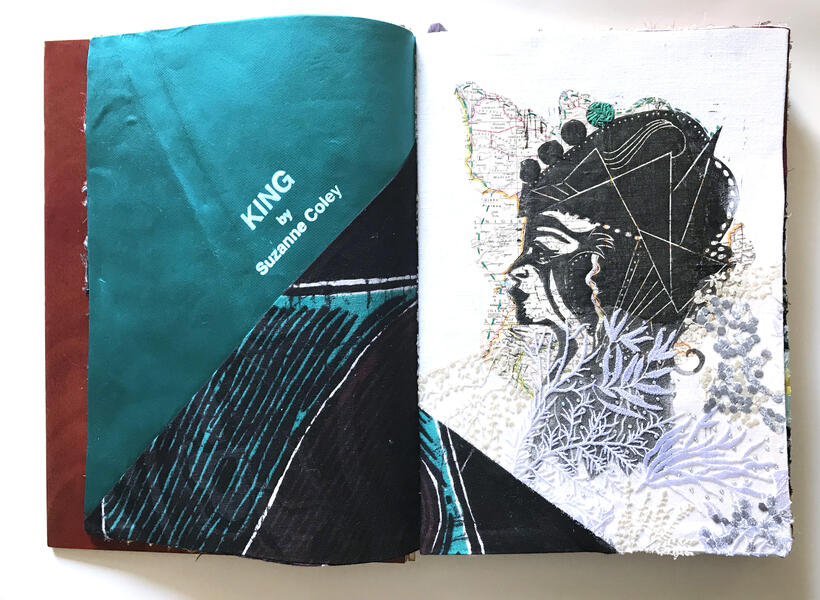 KingTitle page of handmade book King, 16.5 x 25.5 x 2 inches, 2017
KingTitle page of handmade book King, 16.5 x 25.5 x 2 inches, 2017 -
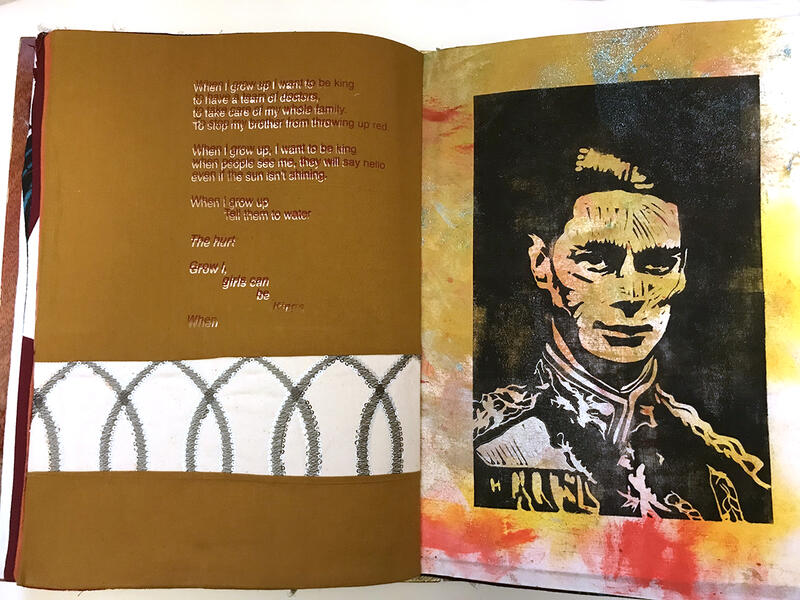 King George VImixed media fiber art, 16.5 x 25.5 x 2 inches, 2017
King George VImixed media fiber art, 16.5 x 25.5 x 2 inches, 2017 -
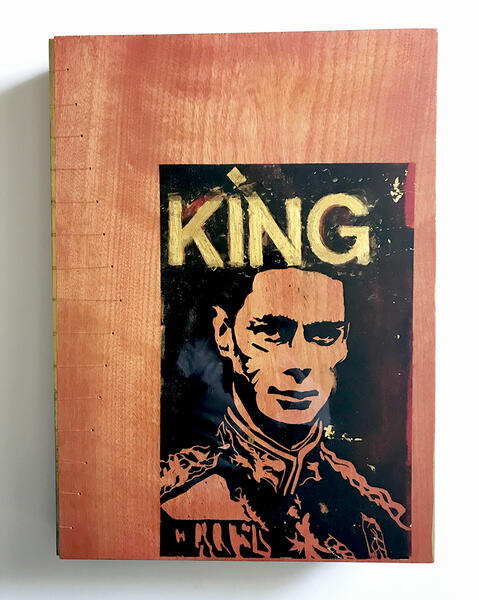 King Georg VI, cover imagewhen i grow up i want to be king to have a team of doctors to take care of my whole family to stop my brother from throwing up red
King Georg VI, cover imagewhen i grow up i want to be king to have a team of doctors to take care of my whole family to stop my brother from throwing up red -
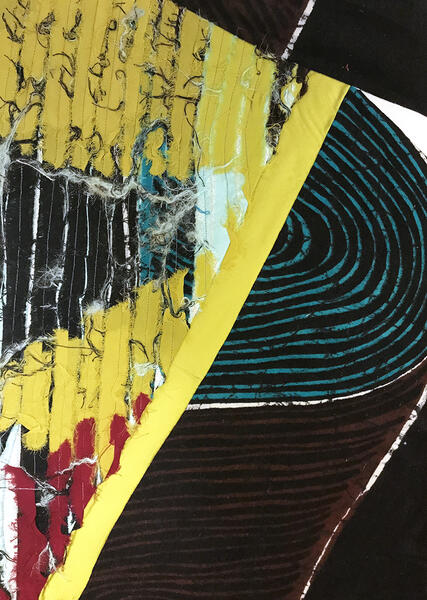 Chartreusewhen people see me, they will say hello
Chartreusewhen people see me, they will say hello -
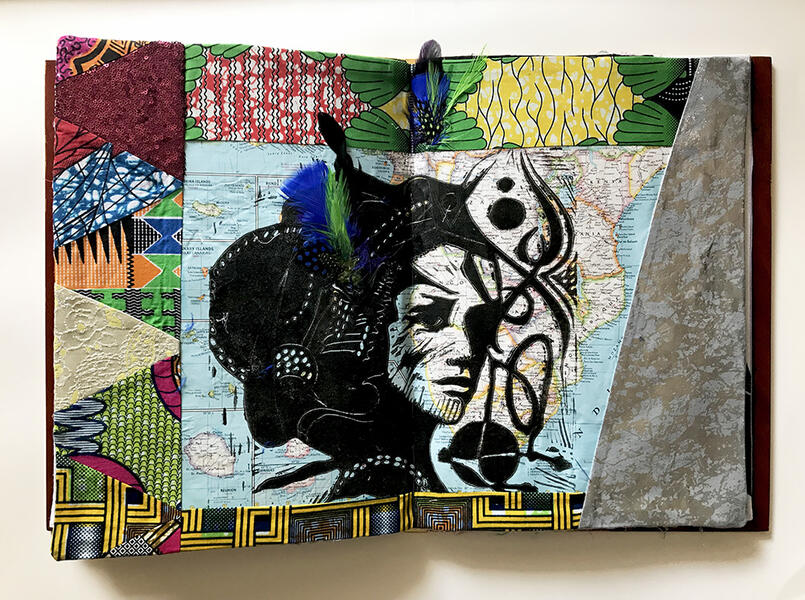 Feathers to flyGirl King
Feathers to flyGirl King -
 Fractured Shadowsmixed media fiber arts, 16.5 x 25.5 x 2 inches, 2017
Fractured Shadowsmixed media fiber arts, 16.5 x 25.5 x 2 inches, 2017 -
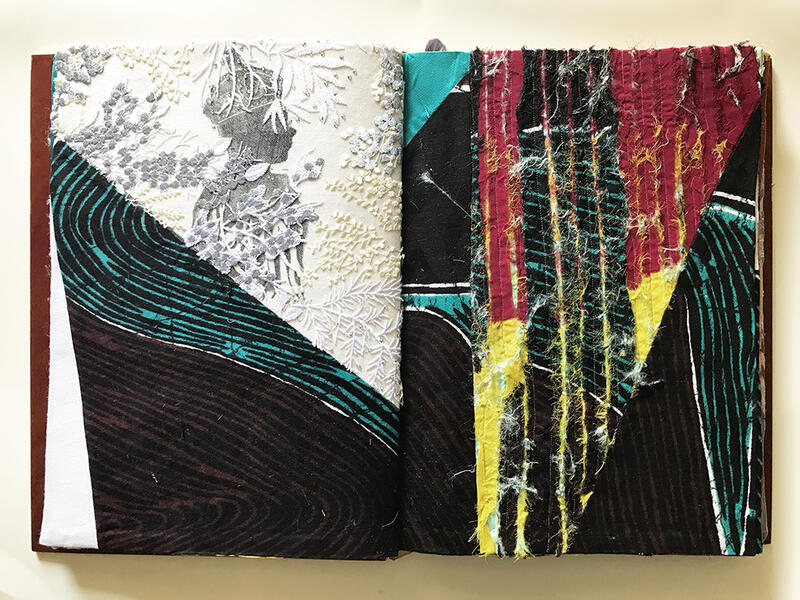 Fractured ShadowsKing George VI stamp
Fractured ShadowsKing George VI stamp -
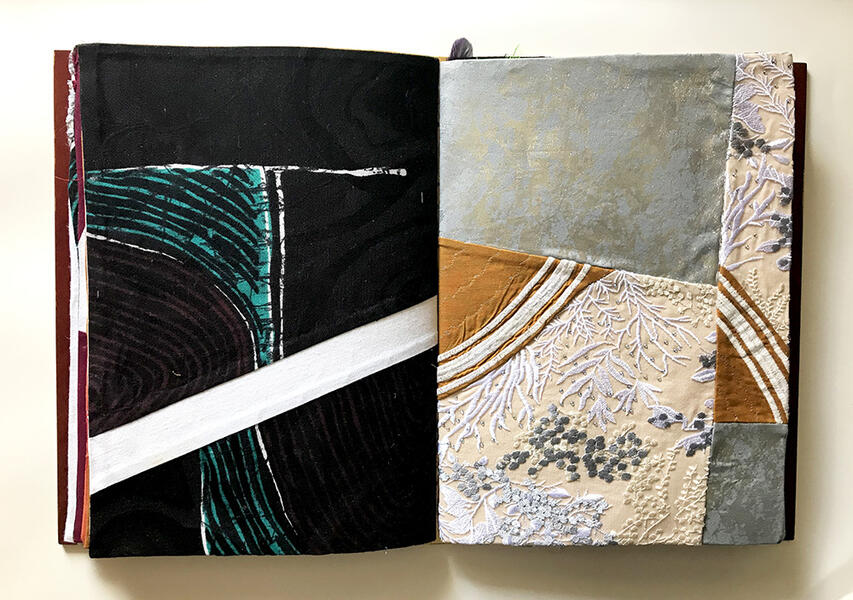 The Sunhandmade textile page, 16.5 x 25.5 x 2 inches, 2017
The Sunhandmade textile page, 16.5 x 25.5 x 2 inches, 2017 -
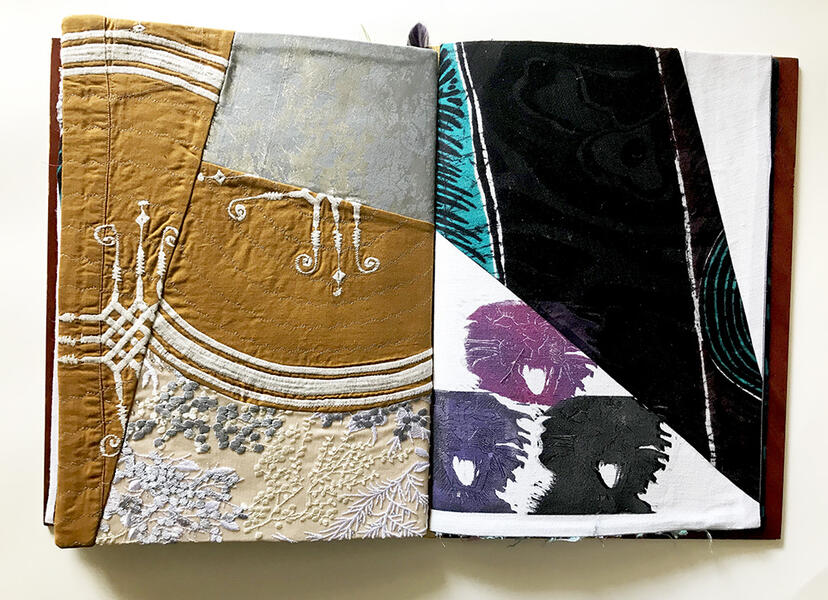 The Hurtmixed meida fiber arts, 16.5 x 25.5 x 2 inches, 2017
The Hurtmixed meida fiber arts, 16.5 x 25.5 x 2 inches, 2017



















